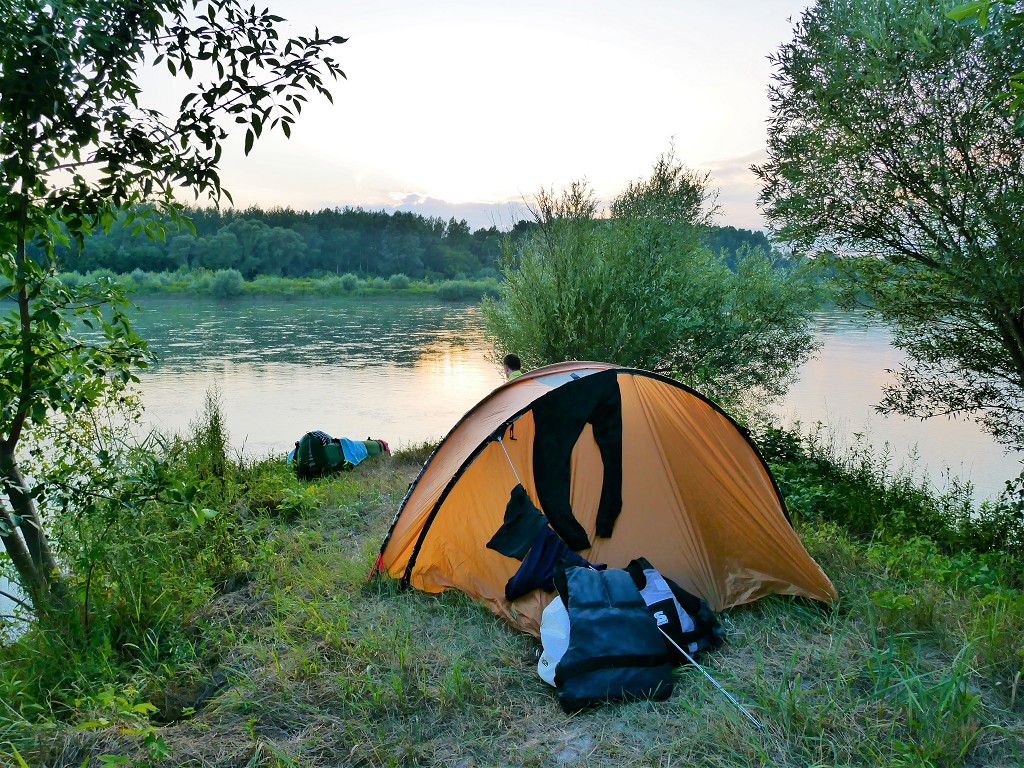
Evens occurred on Saturday the 10th of August, 2019. We paddled our buoyant Zucchini from the Čunovo Dam to somewhere in the Danube Floodplains protected landscape area in the Slovak-Hungarian border region. We paddled 36 kilometers that day. At night, we freecamped next to the river for the first time on this trip.
Want to travel the (entire) Danube River in an adventurous way? Join our Facebook group Danube River Source to Sea: Kayak / Canoe / Bike / Hike / Sail to find your community
Leaving Čunovo for the Danube Floodplains
We only stayed one night in Čunovo. For the morning, we managed to arrange breakfast at 7:30. The guy who had cheffed up dinner so enthusiastically the night before were not so fond of our early breakfast time; we had to beg for coffee.
In our dorm, we finished up packing. Jonas left his black paddle behind for the local canoe rental to enjoy further. We had a very long day ahead of us and needed to fill up all the water containers we could. We carried our hydration bladders to the maximum capacity of about 7 liters in total, then filled up a 2-liter and a 0.5-liter plastic bottle for 9.5 liters of water in total. And we had at least 35 kilometers to paddle ahead of us on a 35°C day. It was a lot to carry on the walk across the Čunovo Dam to our launch spot of the day.
We arrived at the launch spot at 8:45. This is a pretty late start for such a hot day. A man sat down the stairs with his dog, who wasn’t on a leash. I panicked and shouted “Oh fuck no” on repeat as the dog approached us, freezing in place. The man called his dog back and communicated with Jonas about what both parties expected. Jonas communicated that we needed to use the space here to launch our boat. The man kept his dog by the collar and sat there while we started inflating the boat. He left at some point, probably when he realized our process would take a while.
By 9:15, we left. The man had returned to his cozy spot in the shadow with his dog and waved us goodbye as we started paddling out of the withering kayak slide/fish stairs. There were many tiny fishes in the warm and shallow waters. We paddled out and spotted the weir part of the Čunovo Dam. Then we saw a few competitors of the whitewater kayak competition in the part of the main river where they end up.
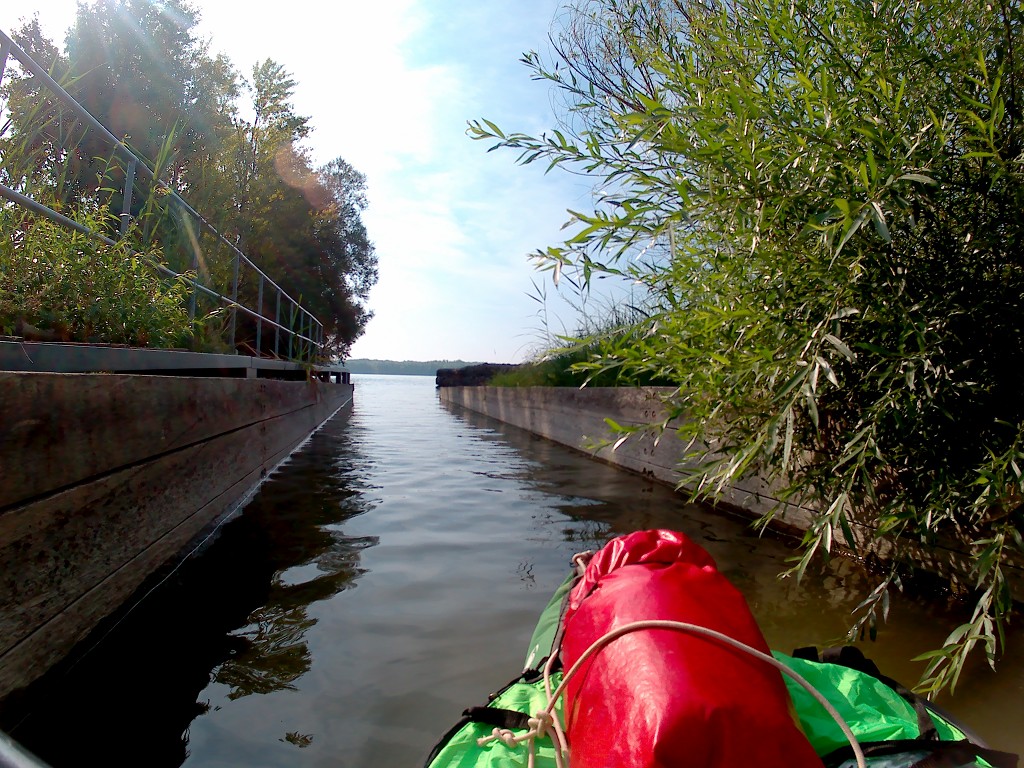
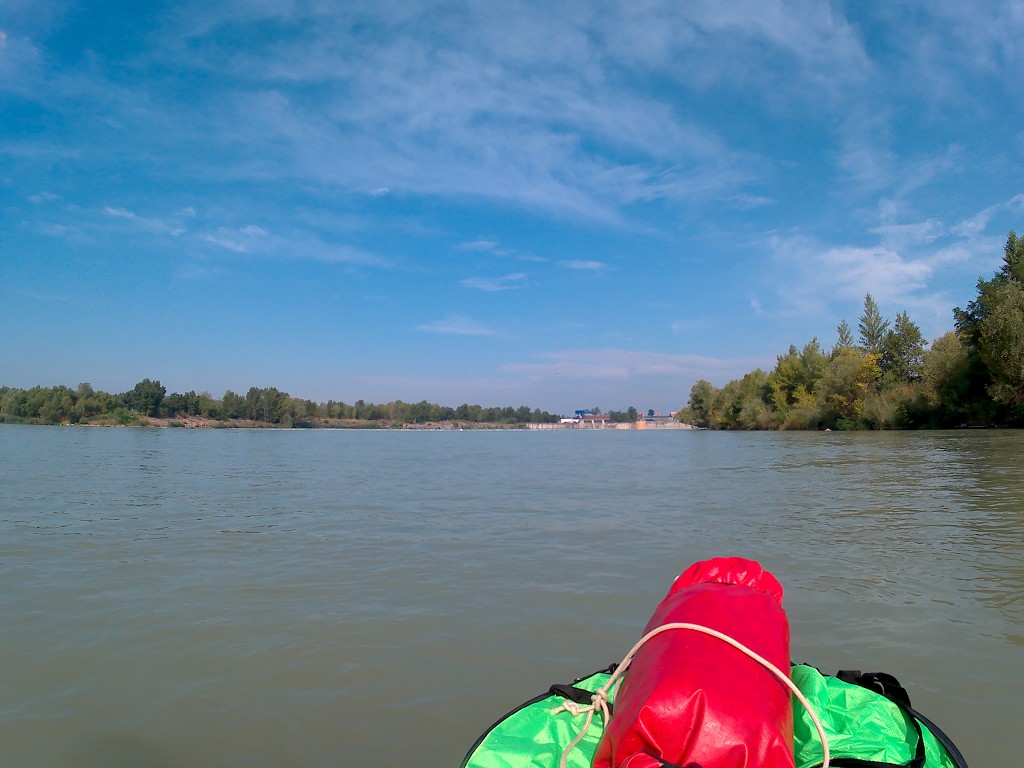
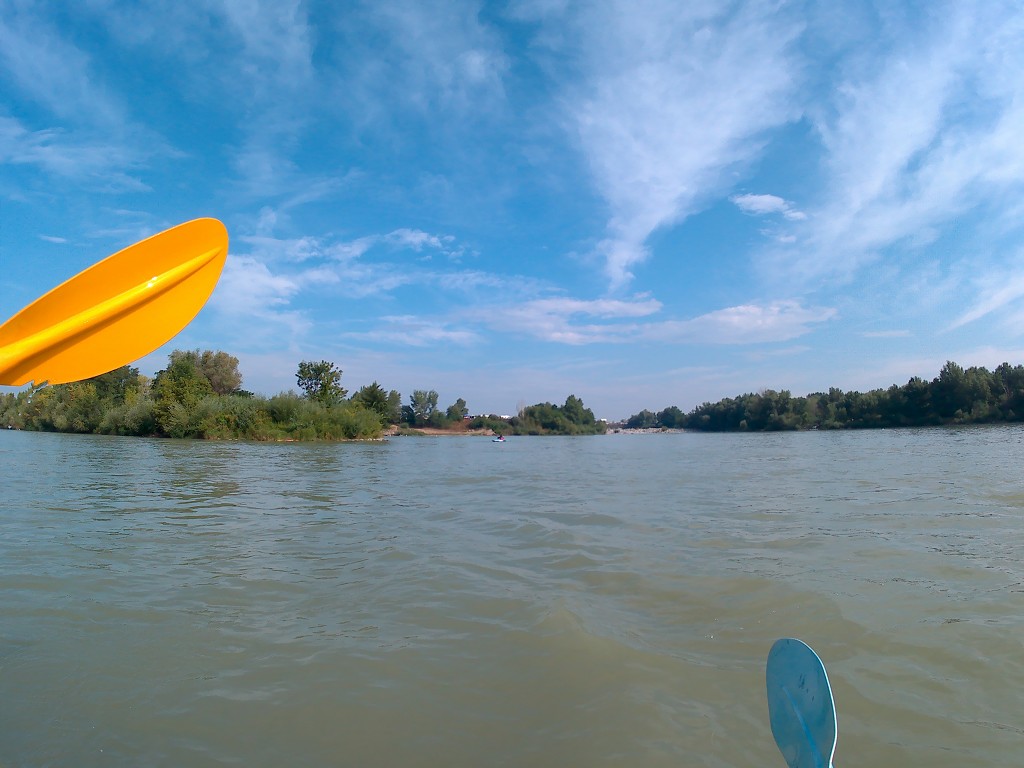
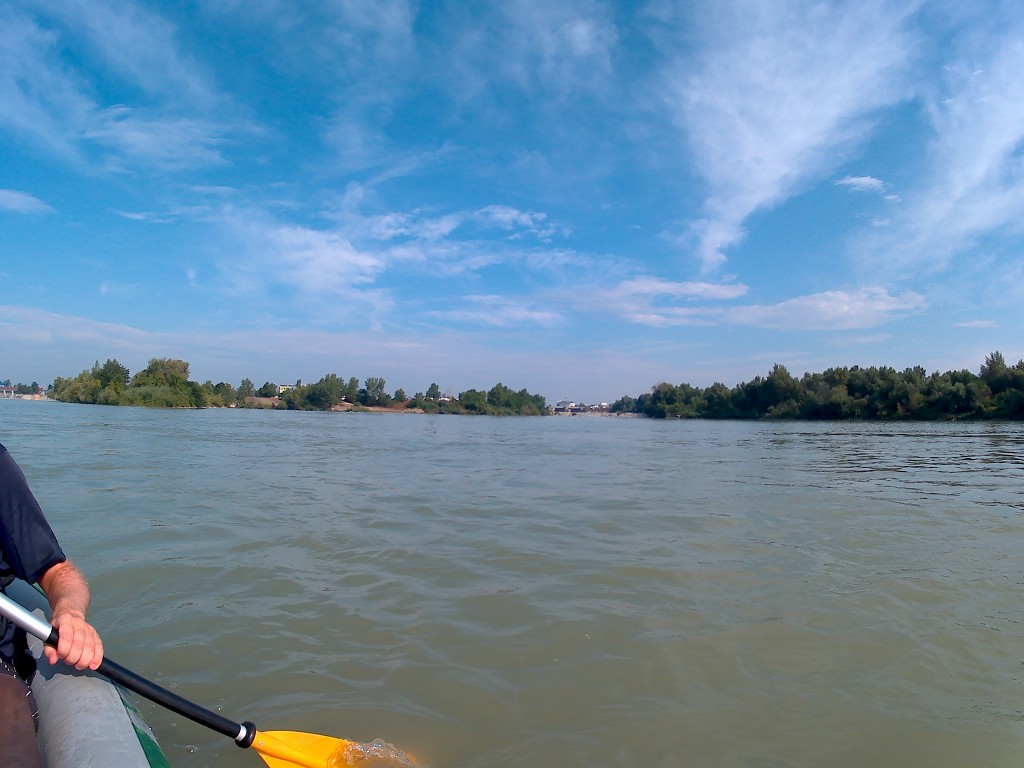
Entering the Slovak-Hungarian Border Region
Within minutes of leaving, we entered the Slovak-Hungarian border region: the left-hand shore is Slovakia, and the right-hand shore is Hungary. Yay, that’s our fourth country on this trip!
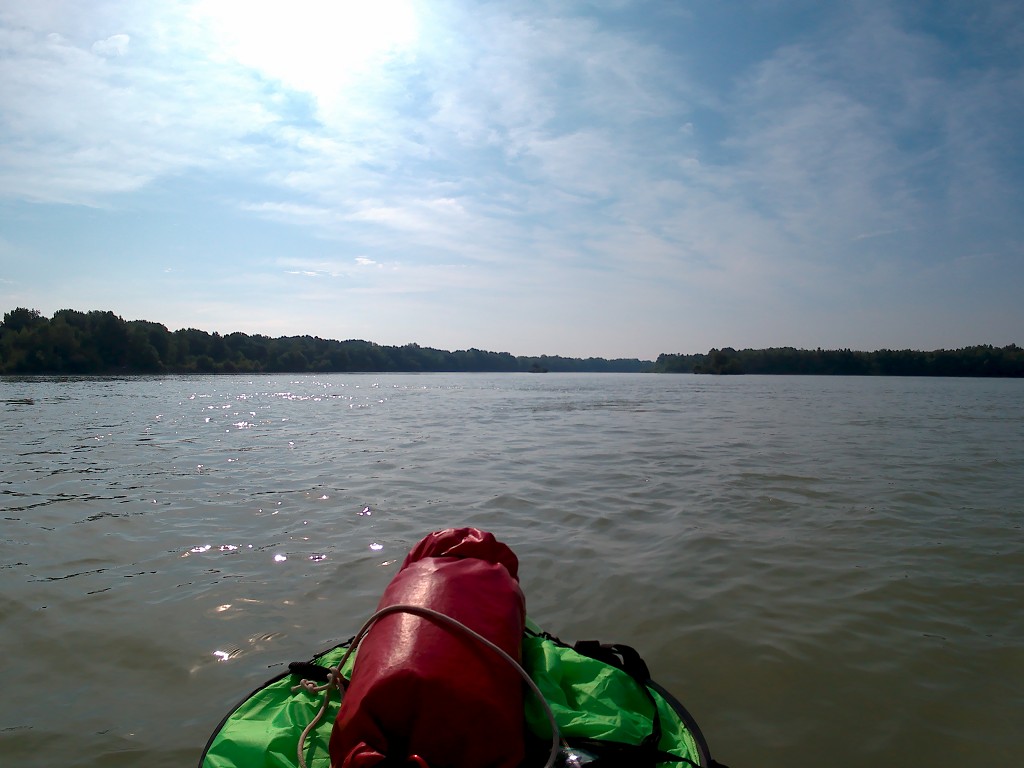
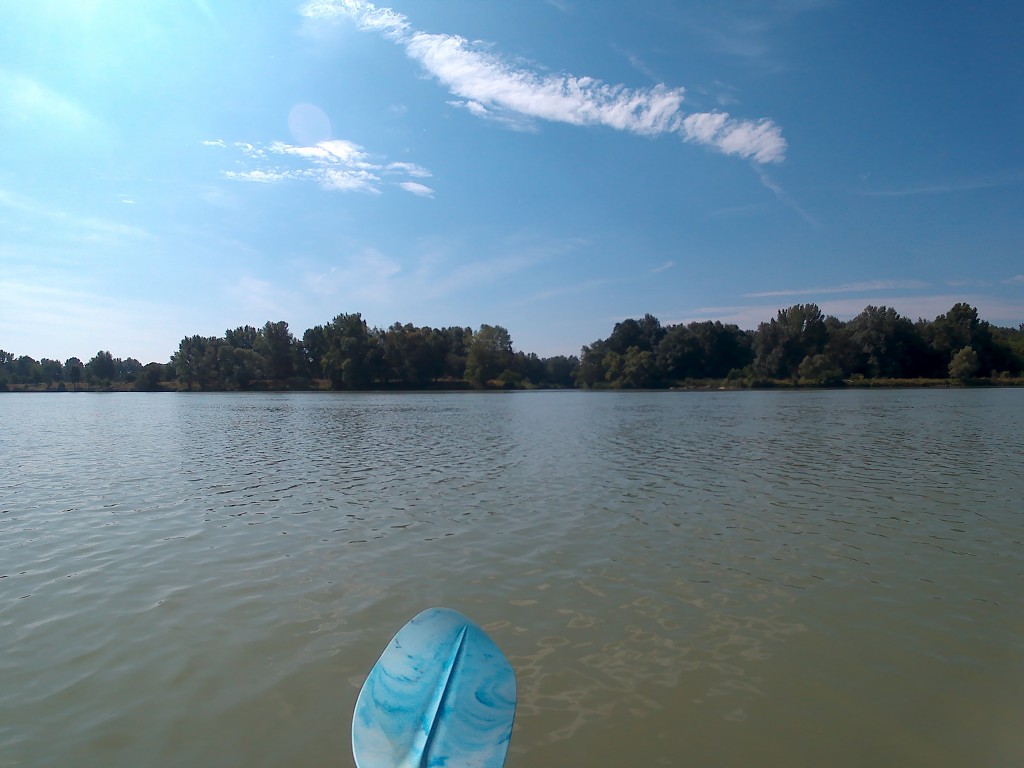
Across the left shore on the other side is the stagnant waters for the cargo and cruise ships called the Gabčíkovo waterworks (vodné dielo Gabčíkovo), before the Gabčíkovo Dam quite a few kilometers further downstream. This shipping canal is just a few hundred meters away, but we’re only focused on our part of the Danube (the ‘old Danube’) and don’t check it out all day. We also read somewhere that it’s forbidden to paddle in the Gabčíkovo waterworks area, so we’re not very interested in that part of the Danube. I think the Tour International Danubien (TID) also chooses this route through the quiet and natural area parallel to the shipping canal.
This Slovak area of the Danube between the Hungarian border and the shipping canal is a ‘Protected Landscape Area’ (PLA) named Dunajské Luhy (Danube Floodplains). I don’t know its full extent, but it apparently already started at the outskirts of Bratislava. It reaches almost all the way to the city of Komárno, much further downstream. It’s not a national park or a nature reserve, but I can’t figure out the bureaucratic differences. Anyway, it’s one of the floodplains of the Danube, much like the Nationalpark Donau-Auen floodplain in Austria. There are many birds and other species that take refuge in its quietness.
Hunting and Fishing in the Danube Floodplains PLA
On the Hungarian side of the river, we hear the gunshots of hunters. It’s still quite early in the day, but we know it will heat up soon. We cross over to the left-hand shore and paddle in the shadow of the trees. Until we spot a diagonal line that goes from the shore into the water and need to dodge it. The Slovak side is full of fishing people.
You have the lonesome fishing man who does it for the peace and quiet: a meditative state of killing the living creatures. Then you have the two fishing men who are friends but don’t talk about their feelings, hence they’re also quite lonesome. There’s also the group of men who go fishing, of which only two of them know how to do it and the others just drink lukewarm beer and banter. You can spot the father-son duo, of which the father desperately tries to connect to his son in a meaningful way, while the son has already marinated aplenty in the toxic masculinity of society, so it’s too late and just awkward.
And finally, you have the fishing family, of which the mother and daughter automatically take on the role of complaining about bugs and are just there to ooh and aah at the petty achievements of the father and son(s). The women are outnumbered, perhaps not in actual number, but weight of ego. With their own will subjected, all that the women can do is stealthily undermine the family venture while simultaneously tip-toeing around the insecurities of the patriarch. They leave one day earlier than planned. The father pats himself on the back for compromising and accommodating the needs of his needy-needy wife. He’s not aware that he didn’t communicate this entire trip at all to any of his subjects. This shit completes him. Divorce is imminent, but he’s in denial.
We veer more to the middle of the river again until the fishing-folk becomes scarcer and scarcer. Only then we return to the Slovak shore to enjoy some more shadowy times. There are way fewer motorboats than expected here. Since the Čunovo Dam also had a lock for big boats – which we didn’t check if it functioned – we thought there would be a ton of holiday people between here and the Dunakiliti Dam enjoying the silence. All we saw on this stretch were two motorboats at 10:20.
Spilling the Tea on the Slovak-Hungarian Danube Dispute
I’d forgotten the route we had on these three consecutive paddle days. Jonas had to remind me that today, we actually had to portage our boat around a weir. I was convinced that the Čunovo Dam was the last dam on this year’s trip. I’d completely forgotten about the Dunakiliti Dam just 10 kilometers after Čunovo.
Now you may wonder why there was already a dam after only 10 kilometers of no dams on this quiet stretch of the Danube. That’s an excellent point! Well, here comes a story of a dispute between Slovakia and Hungary. Make yourself a cup of tea, sit down, and enjoy the gossip.
I mostly base this information on this presentation, this old document and the Wikipedia page on the subject. If you think my standards are low: you are correct.
Čunovo, Dunakiliti, and Gabčíkovo are all part of the larger Gabčíkovo-Nagymaros waterworks. Czechoslovakia and Hungary agreed on building this together in Budapest in 1977 – communist times. Its three goals were to improve the navigability of the Danube, decrease the damage done by floods, and to produce electricity for both countries. The waterworks had to be built between the (Czecho)Slovak town of Gabčíkovo and the Hungarian town of Nagymaros. Those towns are about 150 kilometers apart on the river.
The original plan was to build the Dunakiliti Dam, which diverts most of the Danube waters to the larger Gabčíkovo Dam. Gabčíkovo would both allow the Danube to be more navigable and produce electricity only when there would be peak demand. Downstream, there’d be the Nagymaros dam completely in Hungarian territory to regulate the water levels in between and produce regular electricity. The Danube could flood sideways into the old Danube at Dunakiliti, which would also produce electricity.
By 1981, both countries slowed down the construction on the waterworks. Mainly in Hungary, economic and environmental concerns over the project grew, to the point of complete suspension on the Nagymaros part of the dams in 1989. 1989 was also the year that both countries transitioned out of communism. After some years of negotiation, Czechoslovakia starts building a unilateral solution to the river’s problems in 1991. This leads to the construction of the Čunovo Dam – which is completely inside Czechoslovak territory – on the down-low. In 1992, Czechoslovakia completes the river’s diversion in Čunovo.
The next step is to find mediation with the help of the International Court of Justice (ICJ) in The Hague. Meanwhile, Slovak national identity becomes stronger against the Czechs and the Hungarians through this project. All of this leads up to the dissolution of Czechoslovakia in 1993.
Between 1993 and 1997, the case goes to the ICJ. This results in 24 kilograms of paperwork. In the meantime, Slovakia was generous enough to divert 20% of the Danube water through Hungarian territory via the Čunovo Dam. Especially on the front of raising environmental awareness, this was a landmark case. By the way, the area between Bratislava and Komárno/Komarom is the only inland delta of the Danube – a very unique landscape that the dam would threaten. It would also threaten the drinking water supplies of both Slovakia and – mostly – Hungary.
The ICJ forced both parties to pay up for their damages. Hungary had to pay for breaching their contract with (Czecho)Slovakia. Slovakia had to pay for unilaterally deciding to build the Čunovo Dam monstrosity illegally and out of nowhere, which was also not in the original contract.
The consequence has been a protracted dispute. None of its original goals – increased navigability, reduced flood damage, and lots of hydroelectricity – have been accomplished. Čunovo undermines the effectiveness of Gabčíkovo. Dunakiliti is useless in its current form. Nagymaros has never been built. The whole thing is rather pointless and both the countries that rely on the Danube’s navigability and nature itself suffered. The environmental damage is probably irreversible.
Despite Hungary and Slovakia’s generally good relationship, this problem has still not been solved. The Danube is not navigable for several weeks a year on this stretch due to low waters or floods, which annoys the international shipping community. Political leaders in both countries have come and gone by. There was hope that EU and NATO membership of both countries would help, but that hasn’t been the case yet.
But at the very least Slovakia’s Danube Floodplains received a Ramsar Wetland designation in 1993 and the government made it a protected landscape area in 1998.
Now, back to paddling!
Portaging Around the Weir of Dunakiliti
We’re approaching the island that splits up the Dunakiliti waterworks. On the right, there’s the hydroelectric dam that’s not operational. On the left, there’s the weir that we need to portage around. We’re pretty sure there won’t be any boat wagons to help us, so we’re back to old-school portaging.
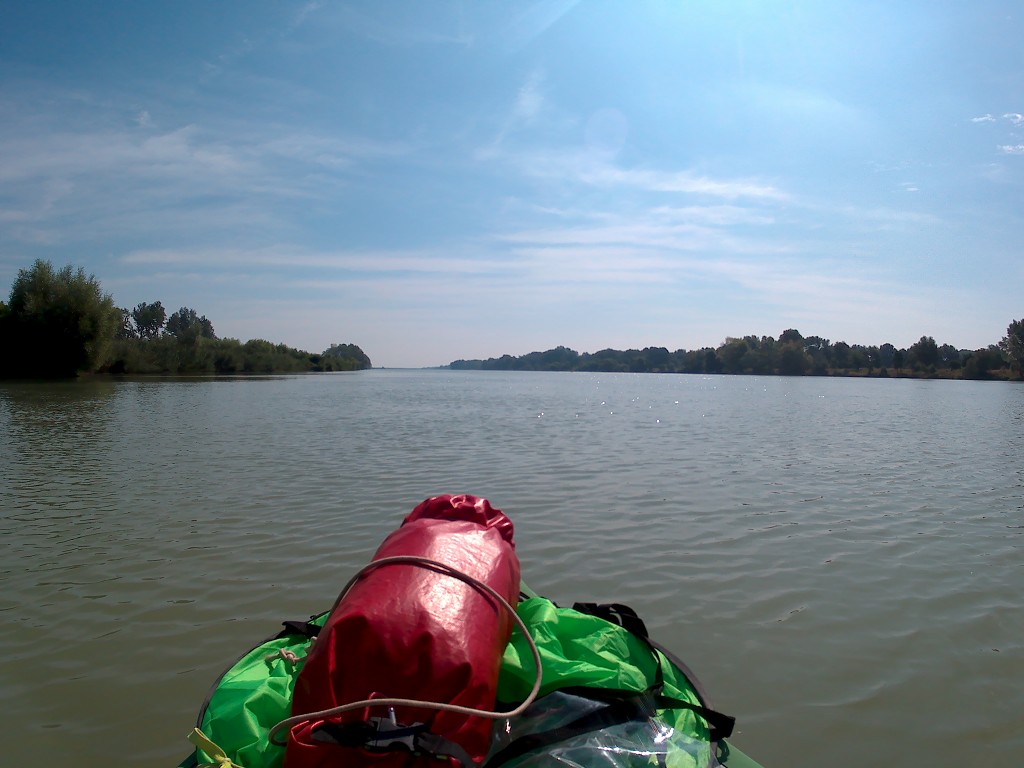
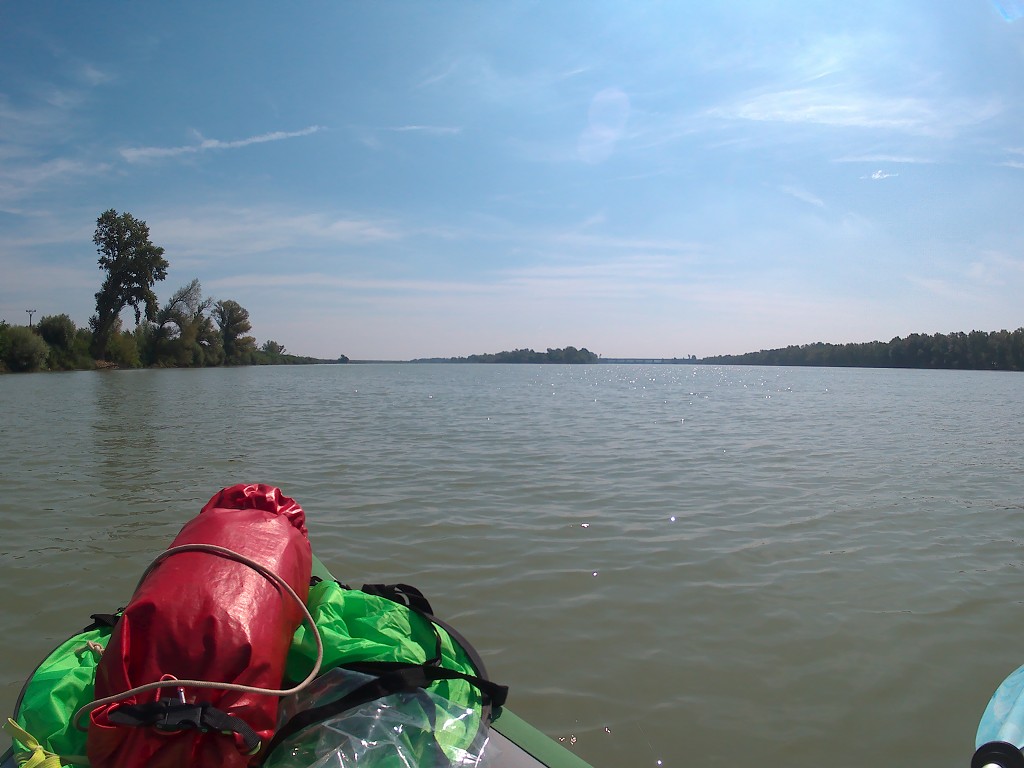
Four people paddling two canoes paddle upstream. We greet one another and slowly approach where the weir should be. We can hear the water drop. The sound grows louder and louder as we approach a horizon we cannot yet see. And no, we have no clue how high the drop is. This is seriously exciting and perhaps a bit terrifying. Jonas knows there’s a slipway on the left-hand side somewhere, but he doesn’t have an exact location. We’re going in blind.
We’re approaching slower and slower and stick to the left side. There’s no real pull on our boat. Our eyes are trying to scan for the edge of the weir. I see a rock somewhere in the middle of the river and some water splashing up around it. That must be it. When we see the edge in front of our lane, it’s only 10 meters away. The slipway appears on our left out of nowhere and we make a beeline for it.
It’s 10:55 when we land our boat on the slipway. Lots of little frogs jump out of the way in a panic. I get out first and see the drop. It’s a shallow decline into the floodplains behind it, but we cannot go over it as we already knew. You’d need one of those whitewater canoes and the will to probably destroy it.
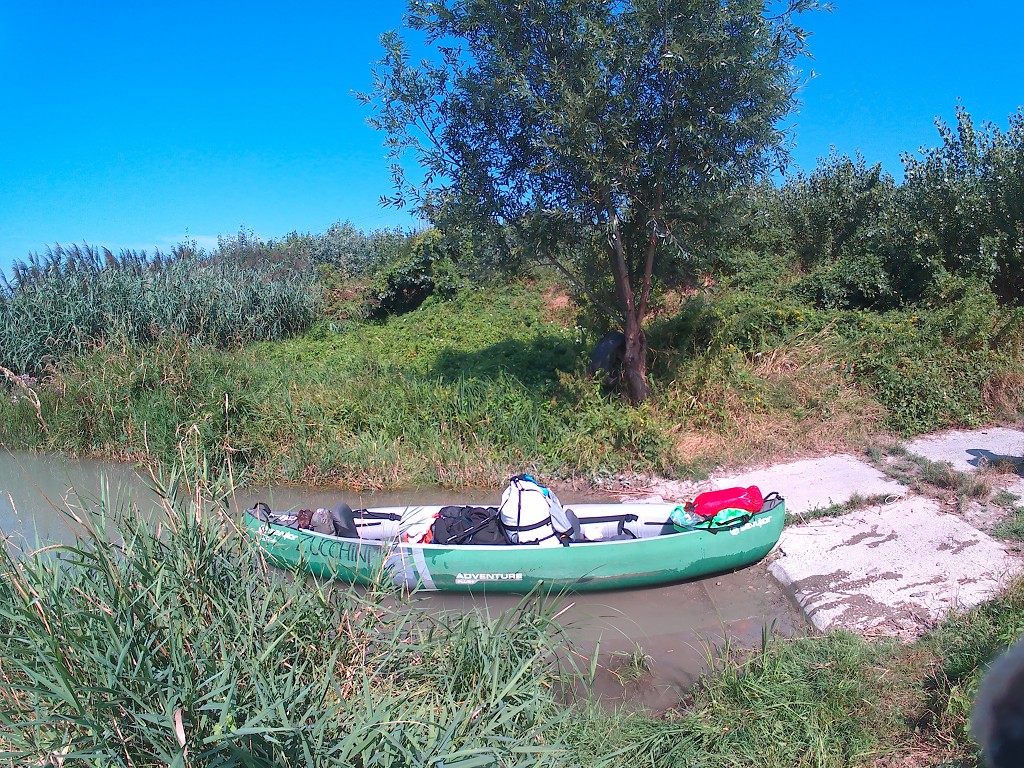
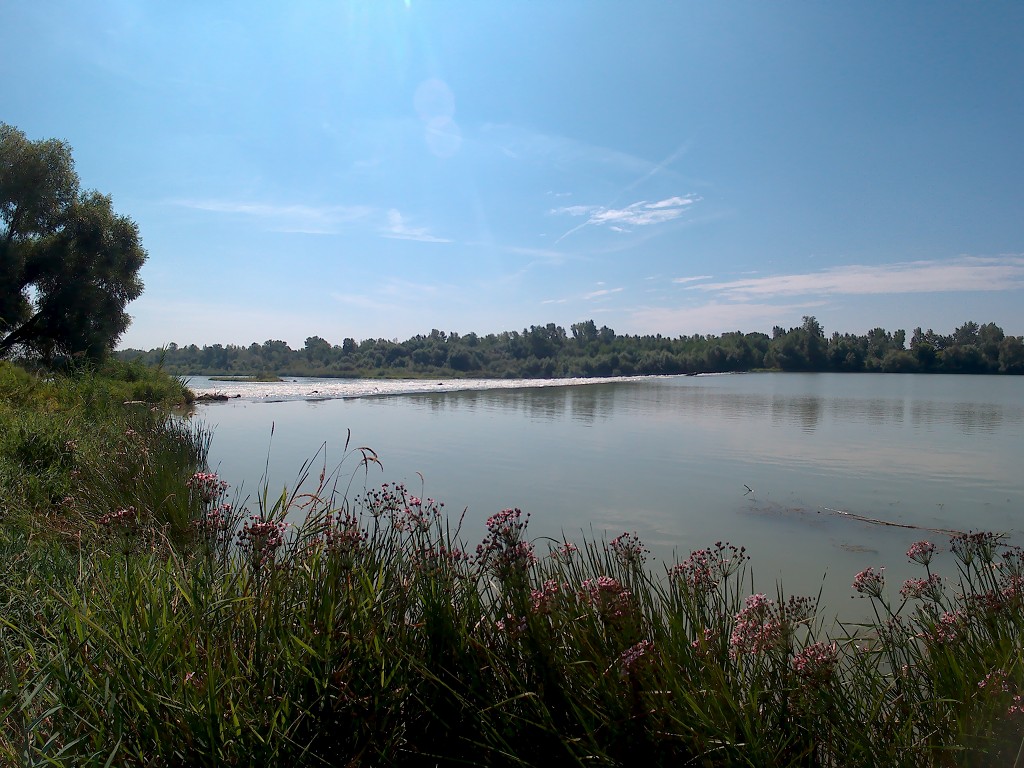
We put the backpacks on our backs and start the portaging process. I carry the back of the boat and Jonas carries the front. Just like the olden days in Baden-Württemberg and Bavaria. The heaviness of the boat stretches the bones in my hands and I remember how in Straubing for example, I had to make sure to sleep with my hands next to my body to not lose sensation in them. And the pains in Straubing happened already more than a week after the last time we had portage our boat by hand before Ingolstadt. That was kind of fucked-up, to be honest.
But this portage is a short one. The path is well-defined even though there are no signs anywhere to help paddlers make decisions. Once we arrive at a crossing of trails, a loud child appears around the corner followed by the SUV of his daddy. They’re going fishing, probably, but tried to go to a spot already taken up by another SUV. We put the boat in the water right behind the weir. Some fishing dudes angle from the shore. We’ll need to dodge their lines.
We strap our stuff back into the boat and then take a break to relieve ourselves. I thought about walking over the levee to see the other side of the Gabčíkovo waterworks, but it’s quite a bit uphill and I didn’t bring my camera. This shall remain a mystery.
Amateur Hour
We’re paddling again by 11:15. This Dunakiliti weir was about 12 kilometers or one-third of the way today. Good job, us.
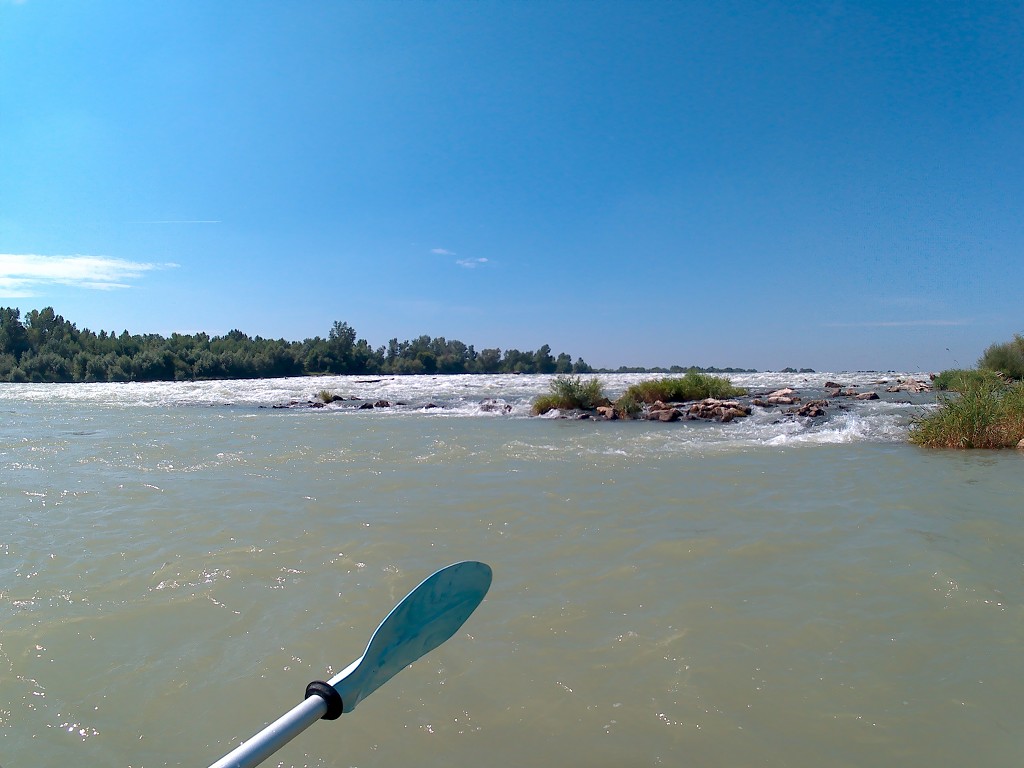
The fishing dudes look intently at us as we paddle out of the zone with the weir. I’m not even sure if it’s ‘fair’ to fish at a weir. Those poor fishes must be incredibly confused and/or tired when they either just dropped off the edge of the world or tried to jump it upstream in a thousand tries. I’m not sure about the rules of fishing, but this looks like cheating.
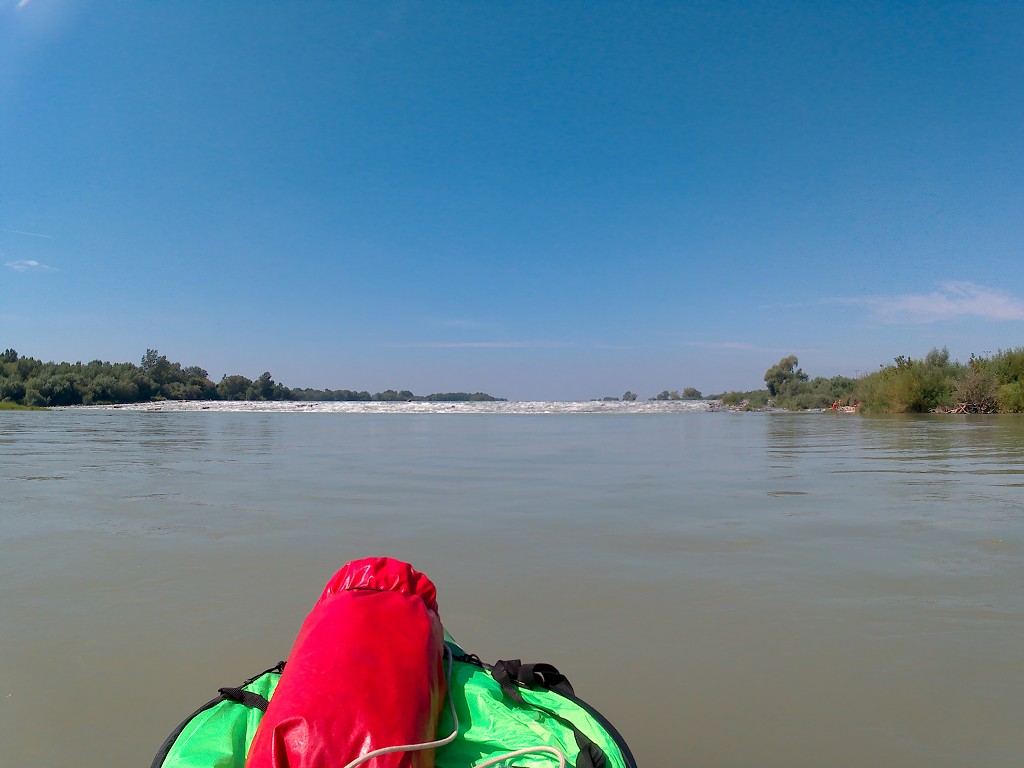
A river island appears and we need to decide about which way we’ll pass it. Today’s rule is “stick left if there’s any confusion”. But we’re too far in the middle and suddenly I see something I haven’t seen in a long, long time: shallow waters where the water jumps. This is a day one-like situation and I’m too slow to respond. Fin-first, we run aground.
Fuck.
I look back and still see the fishing bros. I get annoyed at the fact that we’ve paddled nearly 900 kilometers on this river and now it’s fucking amateur hour. Jonas is first to get out of the boat because I have to put my shoes back on. The cool water around our ankles on the tiny pebbles feels almost the same in 35°C heat as in 5°C temperatures. It shocks you to the core and then raises your awareness of your incompetence.
We drag the boat back to the deeper waters on the left-left and get in the boat to paddle on. Let’s forget about that whole incident. But we remain aware of other shallow areas that pop up.
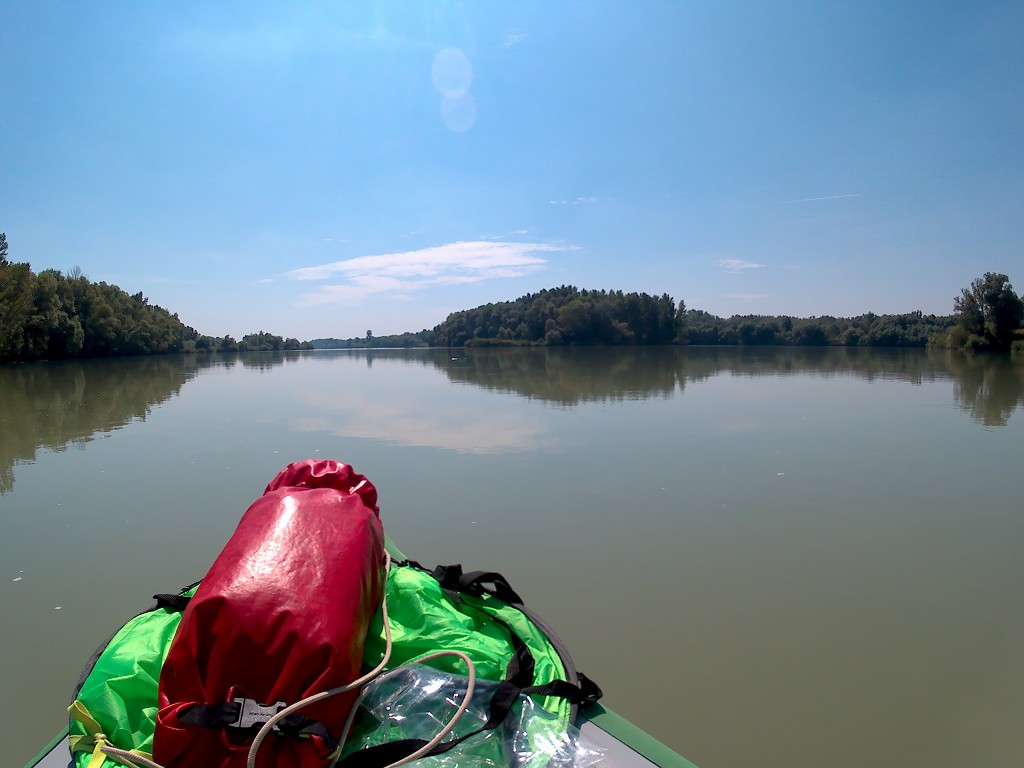
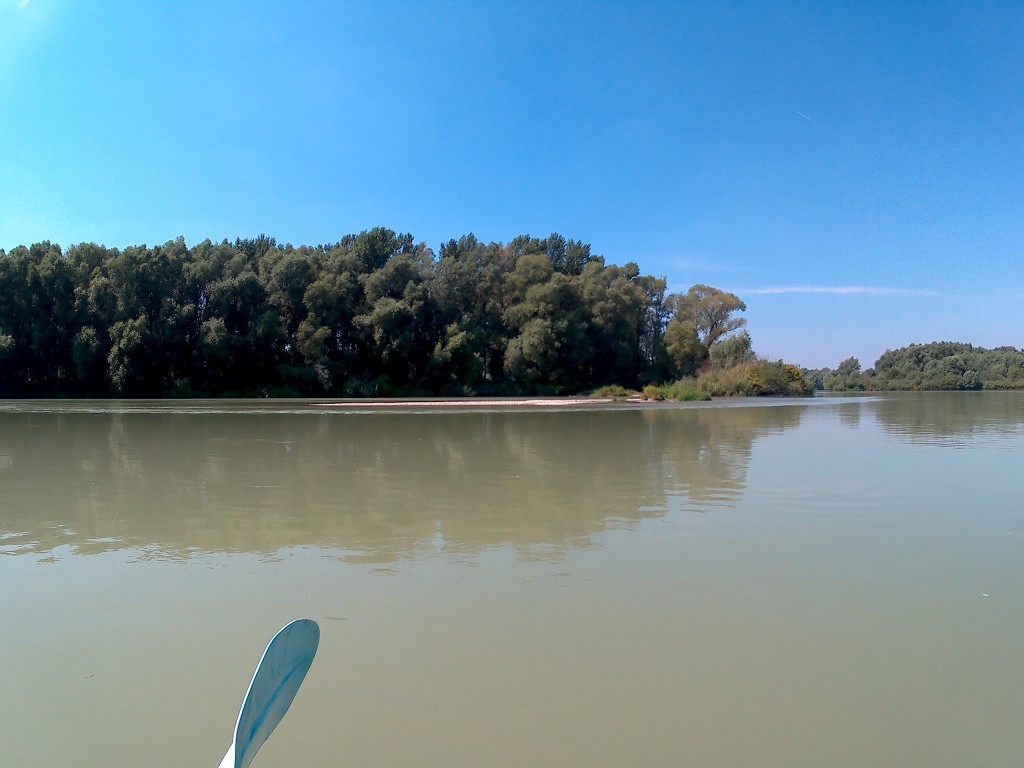
The Floodplains of the Old Danube
The thin and long levee on the Slovak side has now ended after Dunakiliti. The left bank becomes a larger and mostly wider kind of peninsula in the river where there are a handful of Slovak villages. Our curve through the river bends still follows the border between Slovakia and Hungary. The waters from the Dunakiliti Dam join us after the river island ends.
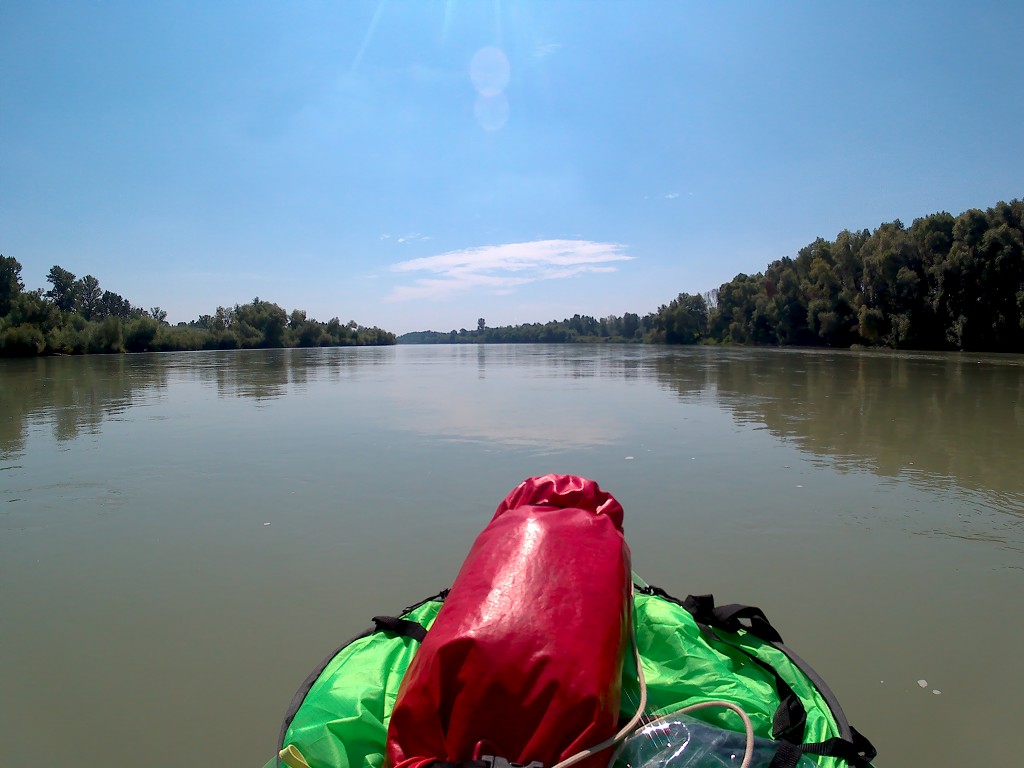
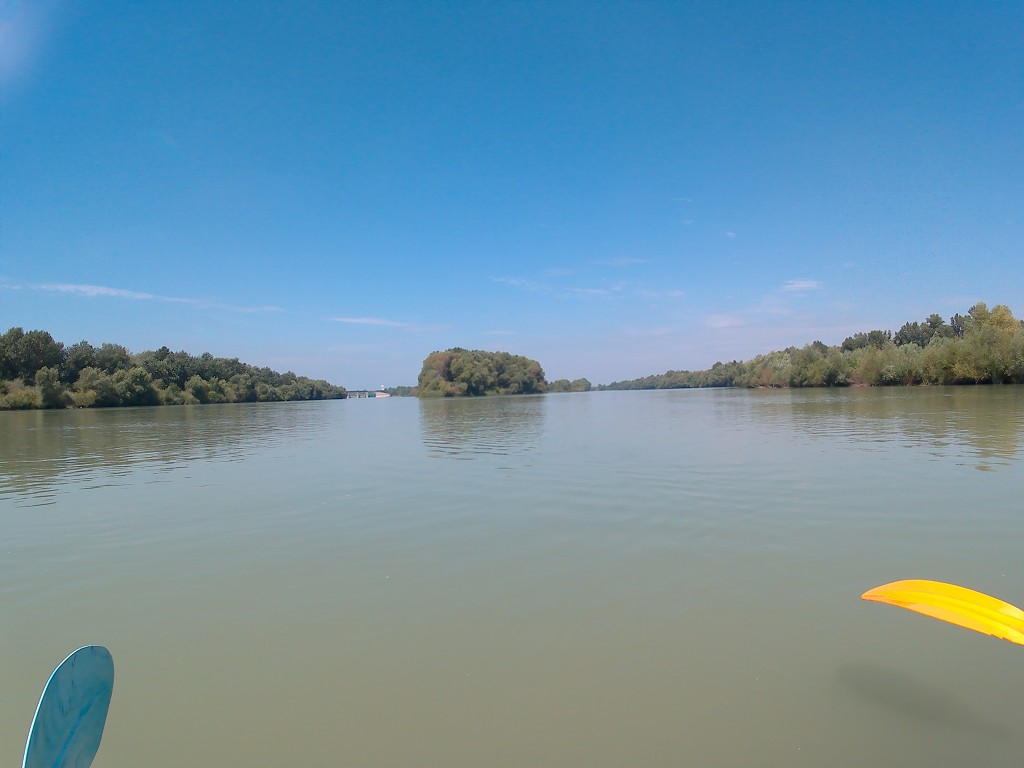
It’s weird for us to be back in an area so similar to the young Danube of Baden-Württemberg in Germany. The river is capricious and hard to read. Sidearms from the Hungarian side subtract and add water from our river, which goes by the name ‘Old Danube’ – which I don’t agree with and which I somehow have an opinion of.
But this stretch of Riparian Zone is absolutely wonderful. The riparian forest edging the shore seems to have seen a lot of human intervention, but it looks healthy and happy. Happy little trees that provide us shadow. The weirdest thing is that when looking into the distance, you can see that you’re descending somewhat. These instances of trippy effects always get me.
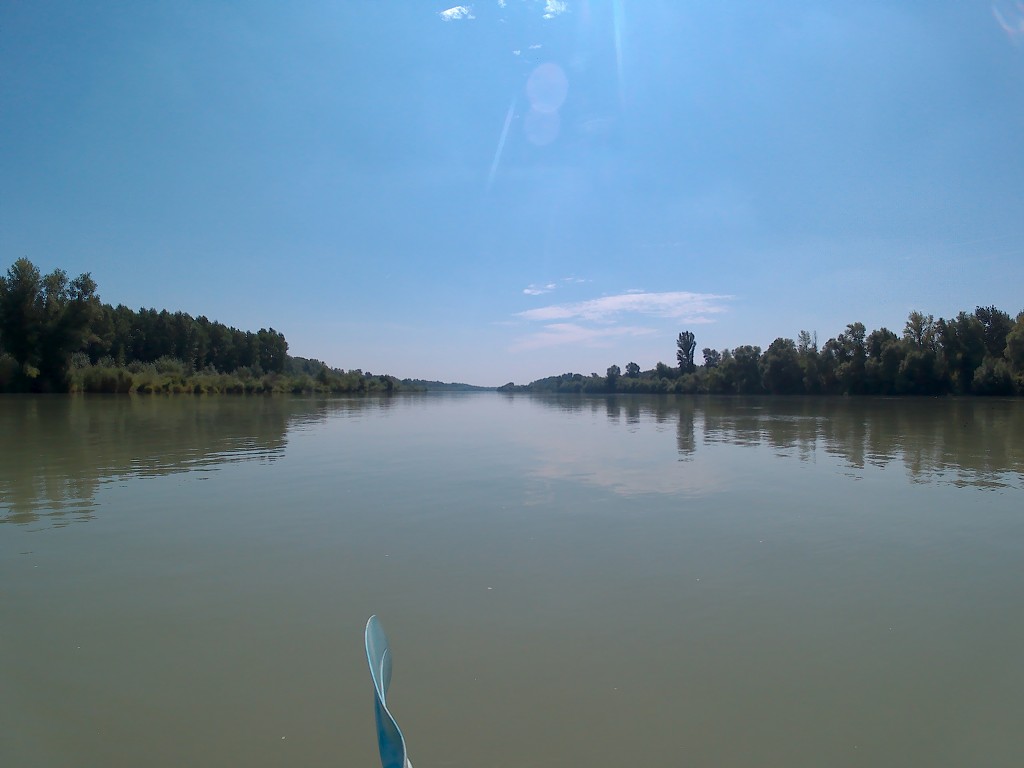

The current picks up and the turns in the river are sometimes treacherously shallow and skinny. I realize that motorboats can’t actually go here, no matter how shallow their draft is. Part of this is natural when it’s on the inside of a turn, where the sediment settles. Part of it is artificial through the help of speedbumps or sills to slow down the river’s speed. We’re observing the water for a while before we decide on which line to take to not get stuck and to enjoy the optimum speed of the river. It’s slowly picking up with the help of every little dam that adds water from the Hungarian side.
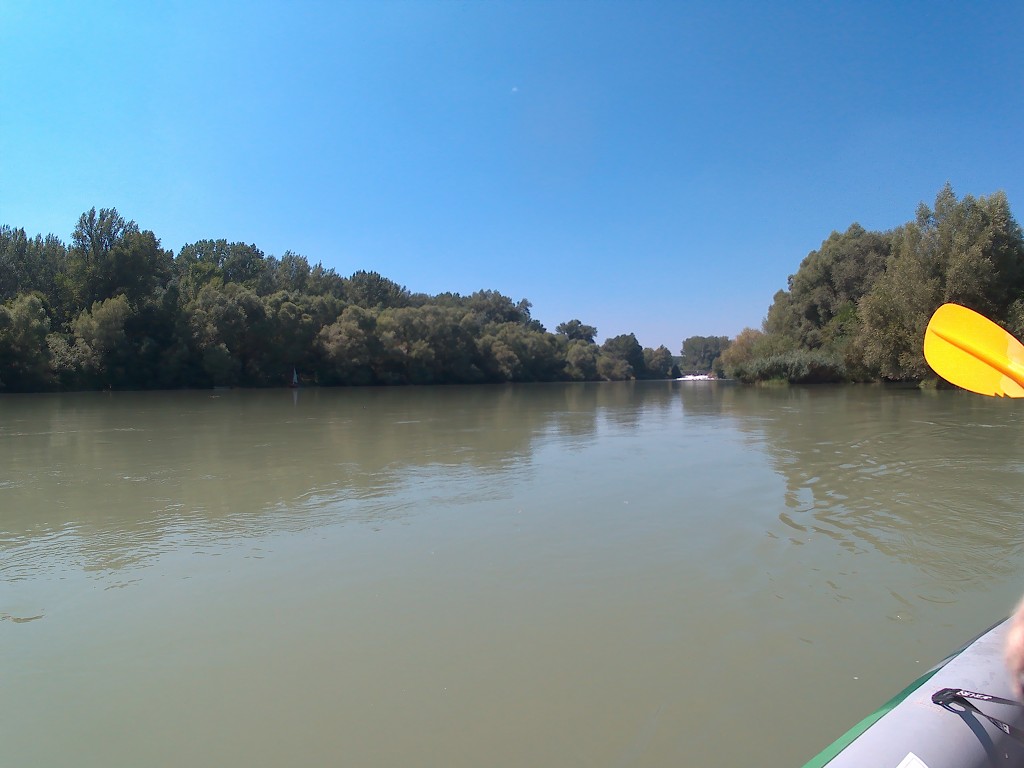
I love the floodplains. They’re really pretty and incredibly robust. They need to withstand semi-regular inundation when the river actually swells to massive proportions. I think back about that map of the drainage basin of the Danube River on the wall of Modrá Čajka that morning. If a lot of rain falls anywhere on that side of the mountains, it will have to come down and collect in the main river. The Danube has to deal with all the fits that the Iller or Inn or Morava throws. And you never really know when the destructive floods come to the floodplains. Not until the forecast is right. It must be tough on the people who live in the floodplains area here.
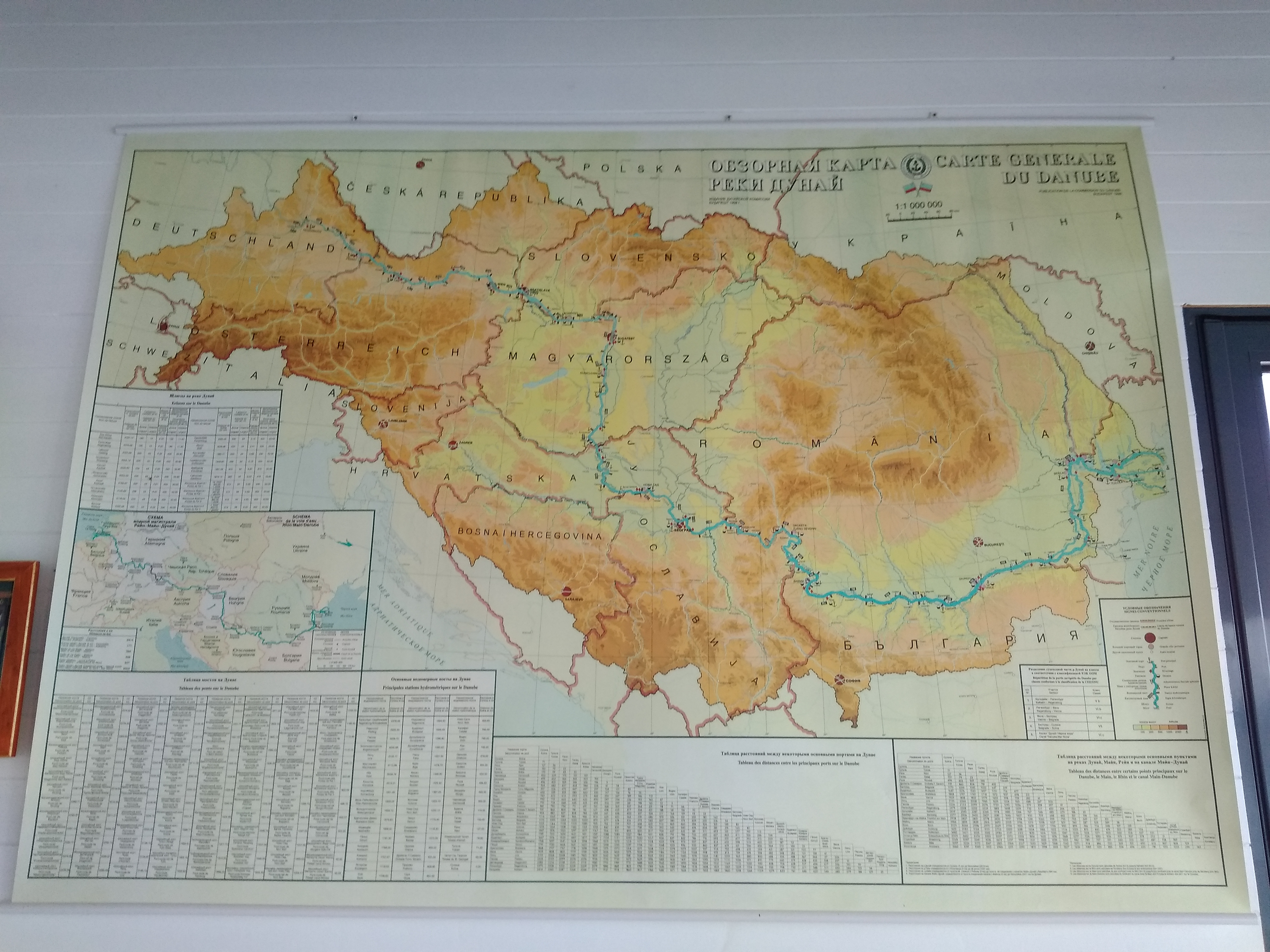
But today it won’t flood. The heat of the day arrives and probably evaporates quite a bit of the river. The water levels have been quite low on the Danube this summer. Months and months of hot weather, with their peaking days, have drained the river and its surrounding floodplain forests. The trees are thirsty and the ships are almost at a point where they’re in trouble. Running aground with a funny-looking kayak is still better than ramming your barge into the shallow stretch.
A warm headwind picks up and stalls our physical exertion, but the current also speeds up.
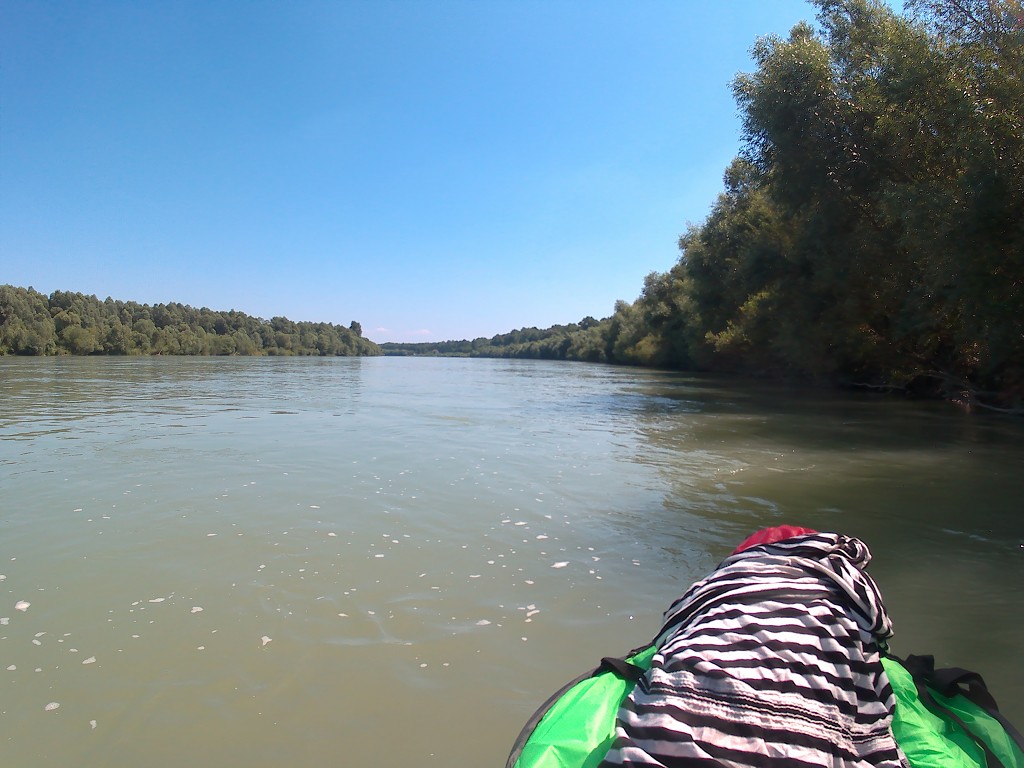
Dunaremete and the Ferry to Prístav Gabčíkovo
By 13:45 we spot the first building since leaving Čunovo. It’s on the Hungarian side and says Dunaremete on the outside. We know from the map that there’s a ferry leaving from here to Prístav Gabčíkovo (harbor of Gabčíkovo, which is not actually a big harbor). I’m hoping the Dunaremete building is also a restaurant or a shop, but it doesn’t look promising. Besides, we don’t actually carry Hungarian currency (Forint, aka ‘HUF’).
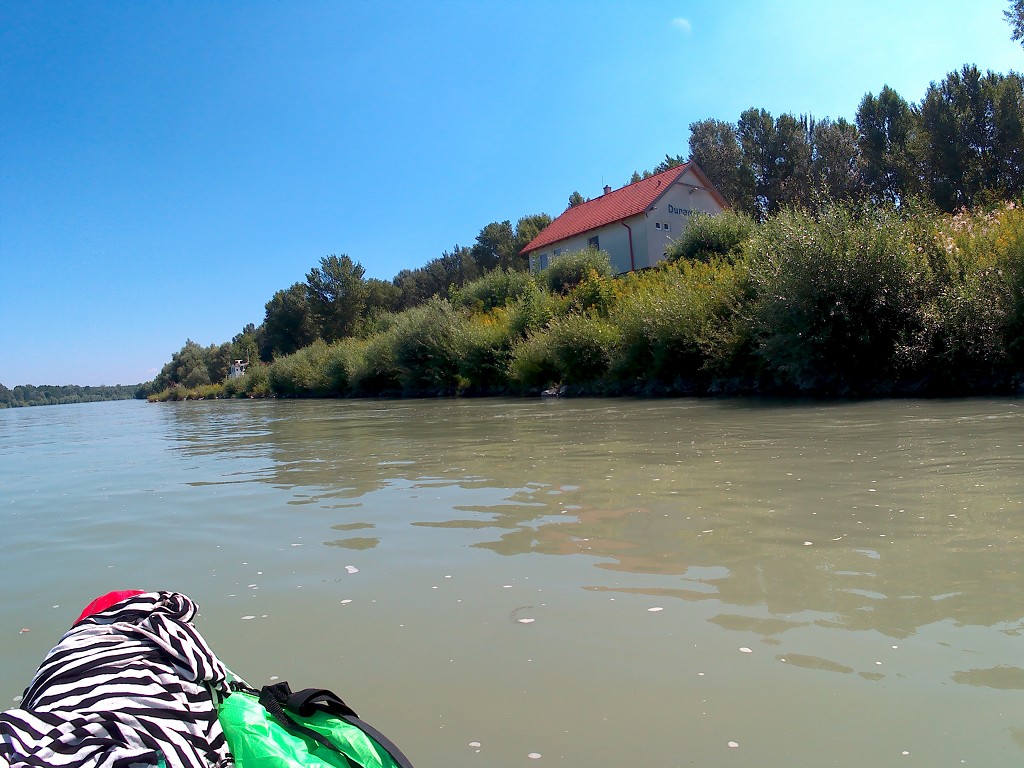
We spot the ferry, which actually looks like it could take a car. This also means that the river is navigable again by tiny motorboats and other shallow watercraft from this point onward. Someone uses the slipway of the ferry to put their own motorboat in. We paddle on to Prístav Gabčíkovo, where we’ll definitely have to make a stop for food and mostly water.

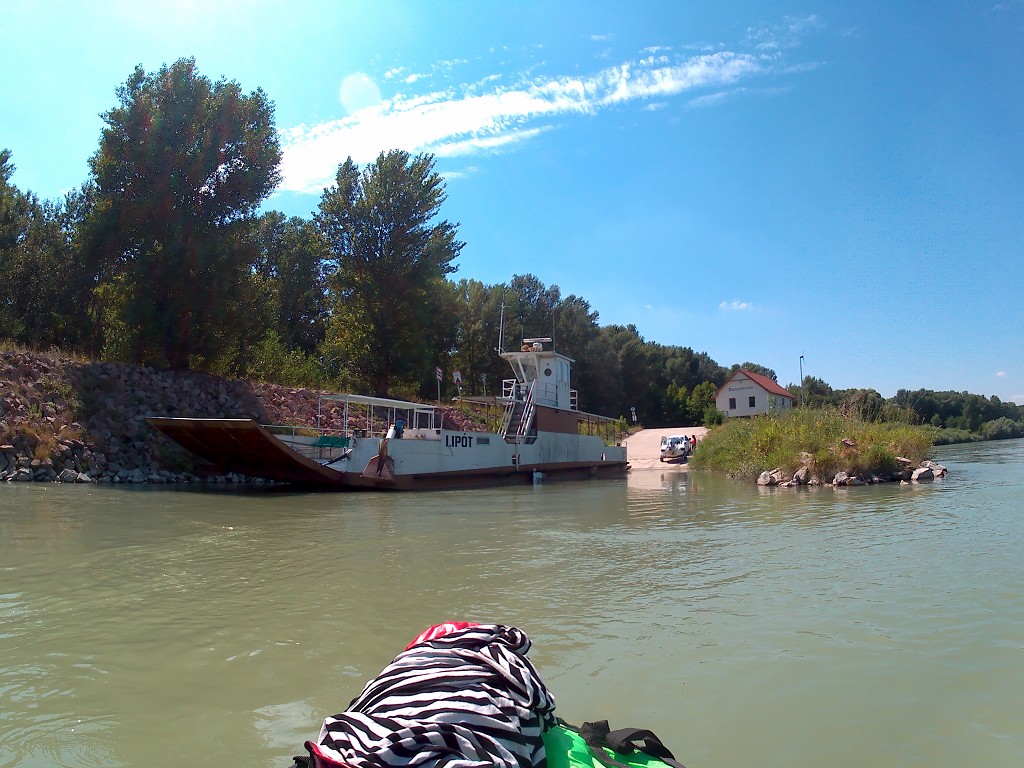
Dunaremete by the river also has a kind of bivouac site, but it’s too early for us to call it quits today. If we would, we’d have a very tough day from Dunaremete to Gönyű in Hungary ahead of us the next day. That would probably be more than 40 kilometers – something we’ve never done before.
We paddle on and there are no more buildings around us. There are quite a few motorboats on the river now, mostly the smaller type and the inflatable dinghy type. By 14:15, we’re paddling into the last river bend before Prístav Gabčíkovo. Jonas argues we should try the first of two restaurants on our map to decrease the risk of not getting to refill our hydration bladders.
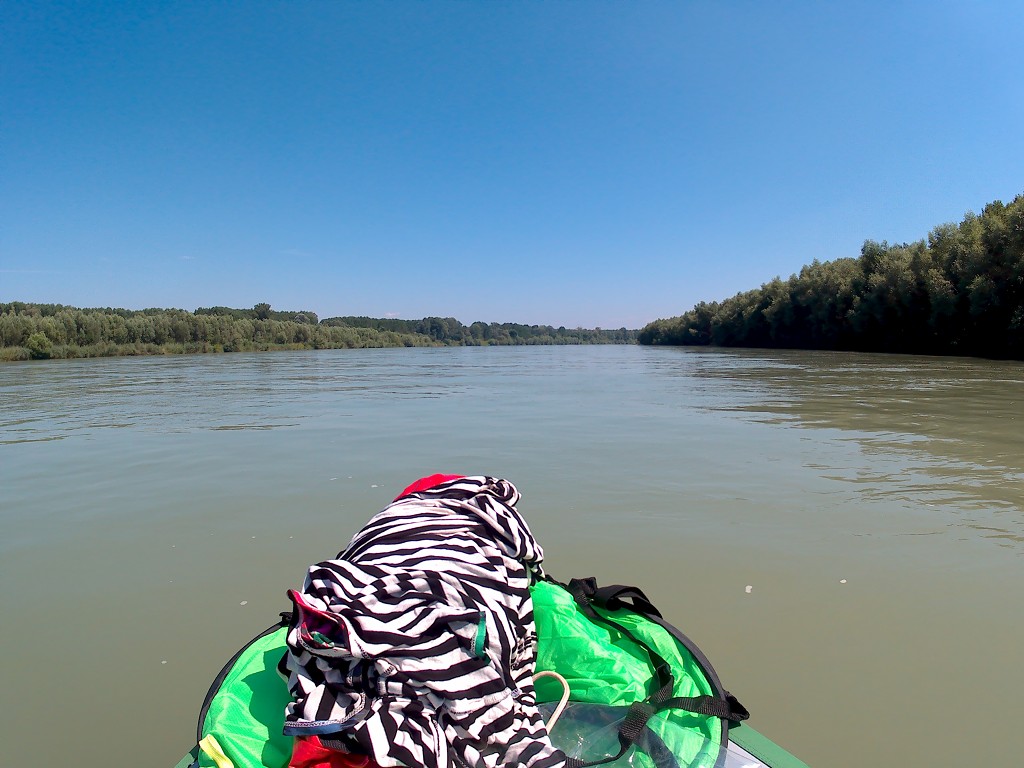
There’s a little confluence with some water from the floodplains entering from the left, which is a stream called the ‘Bačianske rameno’ on our map. It has a few small weirs and a few fishermen on its shores. We see a sign indicating the café called Kompa on the Slovak shore. That’s also where the ferry from Dunaremete is supposed to land. The slipway has one tiny flatbottomed motorboat moored and one very long wooden kayak on the dry part. I don’t think the ferry could land here with such little space.
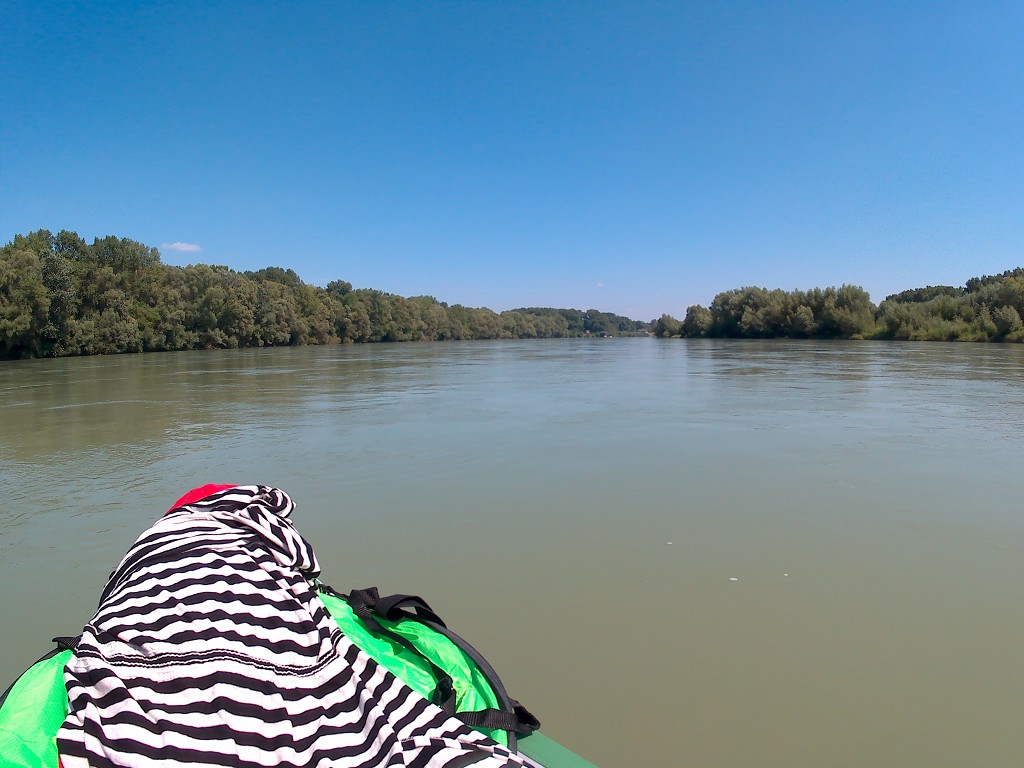
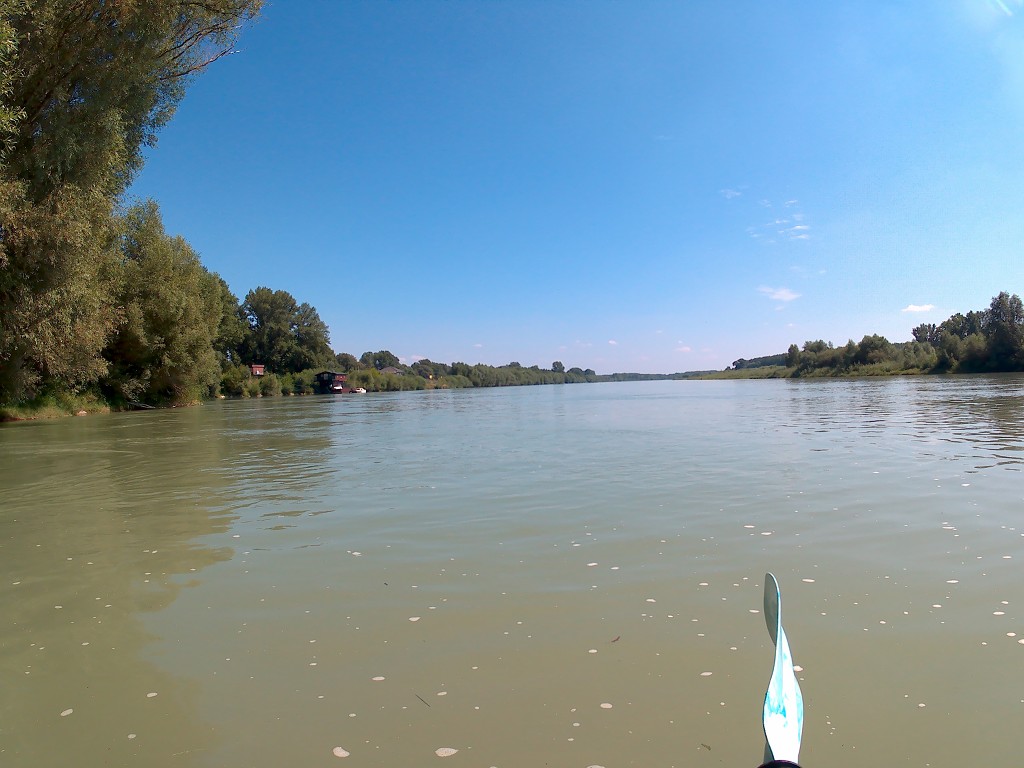
A Break in Café Kompa
We land our boat and discuss what to do for a bit. I’m for stripping our boat of its most important items and taking them upstairs and into the shadow of the café. Jonas wants to keep the stuff in the boat. I’m worried about overinflation, so I’m suggesting to take the boat out of the water and onto the land and let some air out. Or we could try to keep Zucchini inside the cool water and use the boat leash plus a heavy rock to anchor the boat to the slipway for the coming hours.
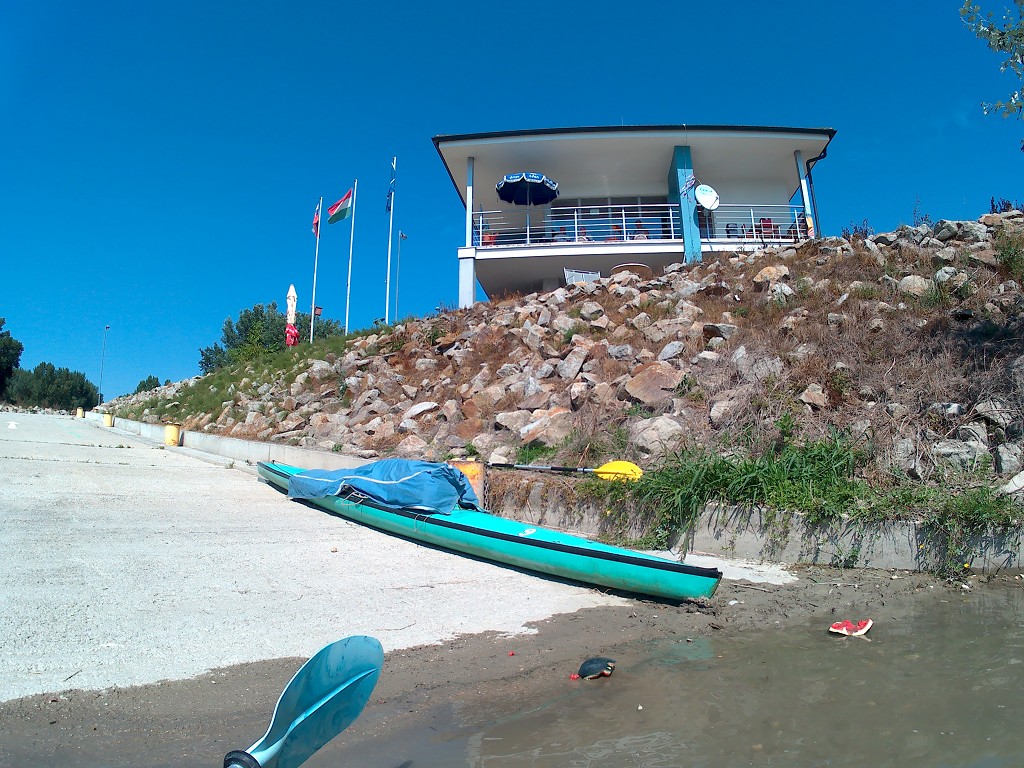
Jonas wants to stay only a short time there, but I want to stay there quite long because if we leave this piece of civilization, we’re just left with the task of finding a freecamping spot and pitching our tent. In my opinion, it’s way too hot to already only rely on a tent for shadow for the rest of the day.
We both give in a bit. The luggage stays in the boat. I cover the dry bags with the duffel bag to prevent direct sunshine. I take my own dry bag upstairs. Jonas finds a big rock and I use it as a bollard with the front boat leash. Zucchini stays inside the cool waters and we trust that they will stay put as long as nobody messes with our setup.
We go upstairs to Café Kompa and order two beers. Making a stop on a paddle day to eat and drink beer was my dream. Jonas found some food in a fridge with a glass door. It’s a bunch of microwave meals like hamburgers (pork), lasagna (beef), some kind of thing with broccoli that looks like it could be vegetarian but definitely isn’t, and one Asian dish with chicken. Jonas takes two of the small burgers (he’s very hungry) and I pick the Asian dish with chicken. The lady microwaves it and delivers the food to our table outside in the shadow of an umbrella. I enjoy the chicken sweet-sour with rice and Jonas munches his cheeseburgers with great attention. It’s true: sometimes, asking for a vegetarian meal is too much to ask. I’m happy I’m currently in a state of mind where I can still do this.
The cold beer sparks a lot of joy. I see some crushed wasps on the floor and know that this undisturbed pleasure won’t last very long. The first wasp arrives and hovers around Jonas’ beer. Then it comes to me. I put a cardboard beer mat over my drink and Jonas does the same. It helps a little bit.
A man who’s talking to the owner of the café asks us in English where we’re from. We tell him and he says he works in Antwerp in Belgium. He’s on holidays in his home country for a few weeks now. He asks where we’re going and we say until Budapest. He translates our conversation back to the owner who doesn’t seem surprised. Lots of people who pass through this neck of the woods must be cycling or paddling to Budapest. And we know there’s currently one other paddler at this café, judging by the wooden canoe that’s fully on the slipway.
One man in pristinely white clothing leaves the café and says goodbye in Slovak to everyone there. He goes downstairs and takes the cover off the wooden kayak and takes off his pants. That’s the other paddler. He’s acting kind of weirdly irritated by the fact that there are other (skinny) boats using his slipway and starts meddling with the wooden motorboat and our Zucchini. Some other guy goes to the slipway to help him and then Jonas goes down to move Zucchini out of the way. He moves his fragile wooden boat in a very silly way that definitely takes up the most possible space. And still acts entitled and irritated.
Jonas couldn’t do much to help by the time he got downstairs. What righteously pissed me off is that the guy used his paddle to push himself out of the slipway by means of Zucchini. He poked our Zucchini with his not exactly blunt paddle because he didn’t want to push his boat a little deeper into the water to be out of our way. What an asshole.
Jonas gets back upstairs. The man with the tiny motorboat also leaves the café and now it’s just Zucchini at the slipway. It’s almost 4 o’clock and we’re out of drink. I order another beer and Jonas orders a Kofola (Slovak cola). He likes that the many men at this café also drink Kofola – it’s apparently a drink a big manly man can order without looking effeminate. That’s surprisingly wholesome if you ask me.
The Whole Fucking Armada
After our drinks, I refill one of our hydration bladders in the bathroom. I get changed there too; it’s too hot to wear leggings and the angle of the sun makes it unlikely that my legs will get burnt now. Then I go down to Zucchini to pick up the extra water bottles we carried. Jonas shouts something off the balcony and I ask him to repeat it. I notice that he points at something behind me so I turn around and see a bunch of canoes arriving at our slipway.
Most of the canoes are attached two-by-two like a catamaran. And they brought their offspring.
It’s too late to move Zucchini out of the way. The self-designated ‘alpha male’ says something to me in Slovak and I reply with “we’re leaving in 15 minutes – if you could kindly not park us shut”. He doesn’t like to be spoken to like this, especially not by a woman. I walk upstairs with the water bottles to fill them up and Jonas fills up the last hydration bladder. Jonas doesn’t get the chance to pee because we really need to leave.
From the balcony, we can see more double canoes arriving at the cramped slipway. Children’s screeching voices emerge from the floodplains. We look upstream and there’s more to come. They brought the whole fucking armada. Even if we weren’t there, all those boats wouldn’t fit on that tiny slipway. Especially with their idiotic connected boats.
We get in our boat very quickly when the next wave arrives. The crowdedness triggers my dislike for densely packed people. I push the boat in with Jonas and get in myself. With our hands, we grab the plastic canoes around us so that we won’t bump into them and use them to lever ourselves out of the traffic jam. More people arrive behind us and I’m signaling to them to take it easy and let us leave first. These are the kind of people who’d directly enter the subway train when the door open instead of allowing the other people to leave first.
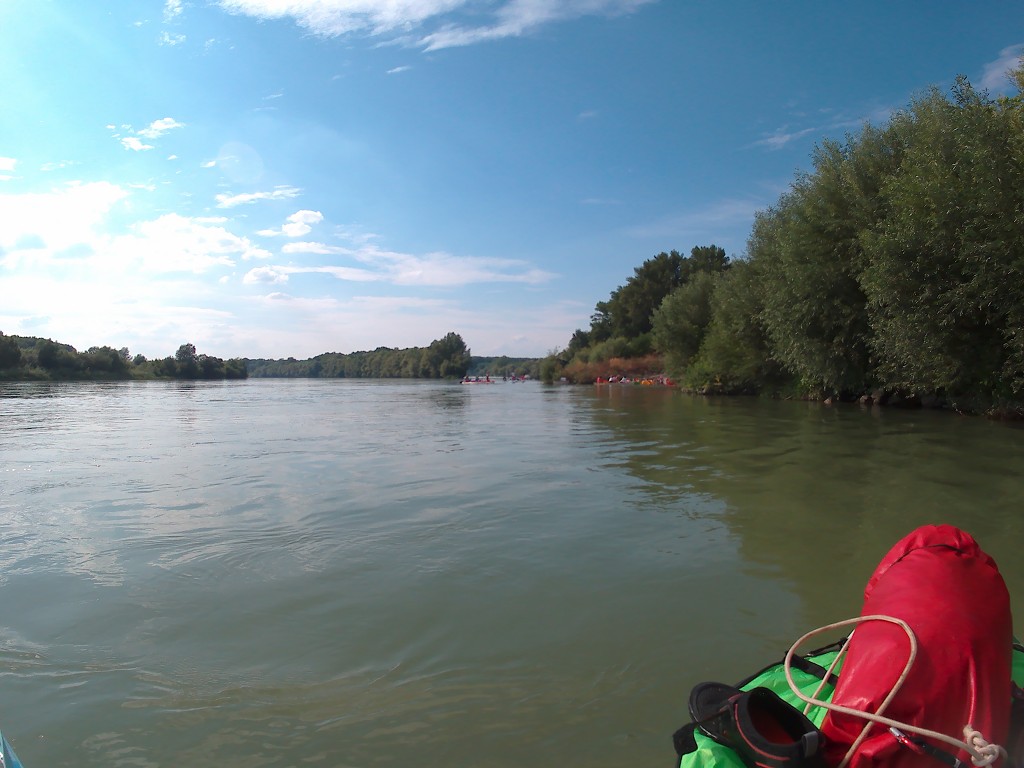
Scouting a Campsite in the Floodplains
It’s 16:35 when we finally left the slipway of café Kompa. Just like that, the natural quietness of the floodplains washes away the sounds of civilization again. Jonas tells me he got stung by either a wasp or a horsefly (he didn’t see the culprit). The current is strong and takes us downstream towards our proposed campsite for the night.
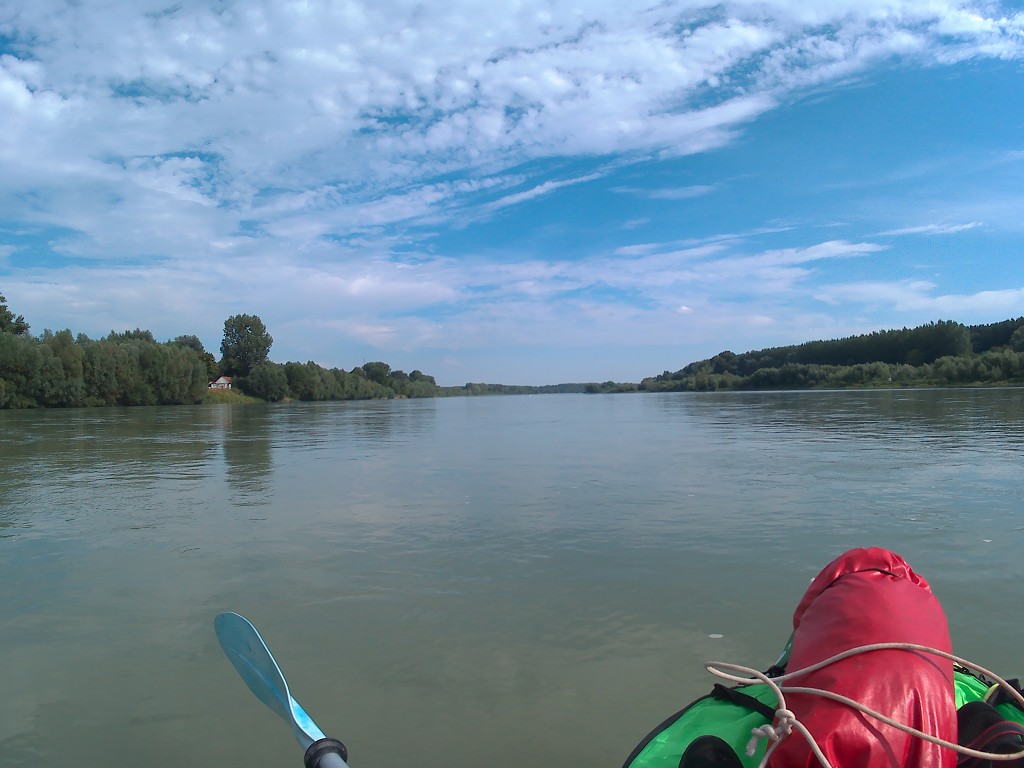
Jonas did quite a bit of research on this. He found out that we’re not allowed to freecamp in the Danube Floodplains protected landscape area, but that it’s fine to do so on the Hungarian side. Then another funny thing is that the border actually switches a couple of times; sometimes, a few hundred meters of the left-hand shore are Hungarian territory, then it meanders back to the point that Slovakia owns part of the right-hand shore. Jonas had marked a couple of beaches recommended by Flußwandern to check them out. The first one was on the right-hand side.
It’s a beachy area, but the shore is densely overgrown with tall grasses and lots of nonsense. We land there to scout the site, but we can’t find a good spot. We get back in the boat and I suggest to scout the left-hand side near the full kilometer sign on the shore. That’s usually where there are stairs. We have to paddle against a strong current and even a bit upstream to arrive at a tiny pier. Jonas gets out to scout it and finally gets to hit the head. But there’s no flat space nearby here. He gets back in the boat and we paddle back to the right-hand side.
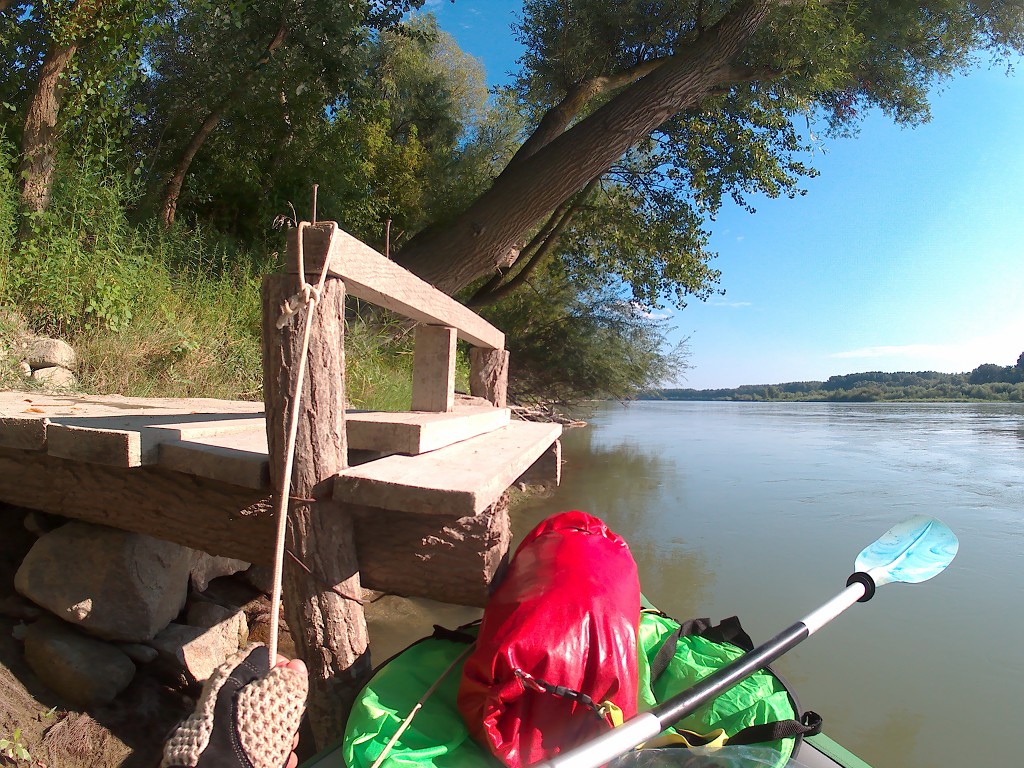
We’re now really in the space that Flußwandern mentioned, but it’s all not great. The amount of space we’d get for our tent would really amount to nothing. We could do it, but we’d be very miserable. I see something on the left-hand shore again. It’s a slipway a bit further downstream. We get back into the boat and paddle there. But there are people with a tiny dinghy. Two grown men, one woman, and one boy child.
Jonas asks them if they’re staying here for the night, and they say they’ll leave at about 20:00. He asks if we can camp there, and they say yes. Jonas finds a really great spot already flattened by other people between the trees. It’s very sheltered and would be amazing if we’d be alone. The younger guy starts talking to the other guy with worse personal care, let’s call him ‘Uncle’. I understand that they’re only realizing now that we’re going to sleep here for the night and the atmosphere changes suddenly. Uncle talks more to the young guy and I know they’re actually not okay with this. I try to tell Jonas that we need to go.
The young guy translates some of what Uncle is saying, about how it’s not allowed to camp here. I’m ready to leave and Jonas tries to talk a bit more as he’s ready to pitch a tent on this beautiful site. The young guy translates some more with a lot of apologies. I urge Jonas to get into the boat and leave. I’m very irritated and Jonas is quite disappointed, but people are obviously in 99% of the cases a bad sign for freecamping. The only case I’ve experienced that they’re not a bad omen is when camping at the beach in Chile.
We paddle on and feel quite defeated. Then, I see a protrusion of the left-hand shore with a fairly flat-looking space. Looks can be deceiving, especially when scouting for a freecamping site; stuff usually looks good from a distance, but then you get there and it’s either total crap or just meh.
It’s a steep shore made up of riprap. We paddle the boat in the little back current behind the protrusion and paddle back upstream to land the boat at the rocks. I get out first and ask Jonas to hold on to the shore while I judge the spot. The sun hangs low in the sky and we’re exhausted. The site is relatively flat. It’s big enough for our tent, our individual toilet spots, and our boat. There’s also a rather big flat rock for us to cook or sit on. I give the green light.
Jonas stays down at the water level to hand me the stuff from the boat. I lift everything onto the land. Only when the boat is out of the water, Jonas gets to judge the site. It’s going to be tricky, but we’ll manage here. It’s good enough and already 17:30.
A Refreshing Dip in the River
We pitch our tent, inflate our mattresses, and lay down our sleeping bags. This is the first time we’re freecamping on this trip. We’re just thinking how exhausting it must be to freecamp most nights while paddling long distances in the daytime.
After we put everything in its respective place, we’re exhausted and really overheated. Jonas suggests taking a swim in the Danube water for rapid cooling. On this trip, we’ve so far never swum in the Danube – at least not intentionally.
With our water shoes and neoprene socks on, Jonas went in first and I followed. There was still a strong current a few meters away, so we had to take care not to enter the danger zone. It was very cool and very nice and I wondered why we haven’t done this before, given we had ample opportunities to swim. I missed this.
Back on the shore, we dried off and sat down on the rock to dry some more in the air. The sun was setting and we discussed whether we wanted to cook our dehydrated macaroni and cheese kind of dish (just add water!) We weren’t really hungry enough, so we decided to hang everything to dry and retire to the tent. The first mosquitoes came out and so did the moon.
Freecamping in the Danube Floodplains
We’re lying in our tent and turn on the internet. We barely have reception, but it still works alright. Jonas checks the latest weather forecast. The chance of rain increased. I’m a bit worried about it, though I’m still enjoying the sounds of nature coming from the floodplains. It’s still such an amazing experience.
Even though the days have been getting shorter, it’s still pretty late when the sun actually sets at 20:15. Dusk lasts very long. With the sky roof and the outer layer of our tent open, we still have lots of fresh air and a good view without the mosquitoes. I check the map and see we’re actually on one of those pieces of left-hand shore that are surprisingly Hungarian instead of Slovak, so we’re even freecamping legally! I snap a photo for an Insta Story through the netting of our tent.
By the time I’ve finished uploading the post, the sounds outside start to change. There’s a strong wind arriving and we need to put our water shoes back on to rethink how we left our stuff outside our tent. I put everything that’s not heavy inside our tent and we flip the boat so it’s more aerodynamic. The full hydration bladders weigh down some other stuff outside. Jonas attaches his wet swimming pants to one of the storm lines of our tent. We’re a bit panicky but we think we’re good for the night. We close the sky roof of the tent. No moon view for us tonight, unfortunately.
Back in the fully-closed tent, things start to get a bit spooky. The wind power increased and I can’t get rested. I do stuff on my phone as a distraction. Jonas listens to a podcast. The tent wobbles quite a bit. Jonas had asked earlier why we carry so many tent pegs. For these kinds of situations. But I hadn’t done my best work on stabilizing the tent upon arrival, which I regret now.
The sounds become more haunting. Jonas tells me the forecast says the wind shall die down again in an hour. The internet and a few games of minesweeper comfort me. Then I hear whispers. I’m thinking shit there are people that came to our campsite. I’m lying there haunted by the sounds for quite a while until I warn Jonas. He takes his earphones out and I realize the whispers came from his podcast. Silly me.
I try sleeping, but the stormy weather increases. The tent wobbles and I’m hoping the pole won’t snap. It’s really uncomfortable and on top of all that, there are a few living mosquitoes in our supposed sanctuary. This is really bad.
I’m pretty done with this. Eventually, I fall asleep in small cycles. The weather dies down at 2:35, which I know because I woke up and Googled the time of dawn to set an alarm for that time. At 5:05 we’ll pack all our things up because it’s better inside our boat.
We knew we had to freecamp. That’s why we’re here right now. I think there’s a strong case to be made for doing things the way we used to do them. That is: glayaking or glanoeing.
I finally fall asleep.
Enjoyed this Post? Feel Free to Share it!
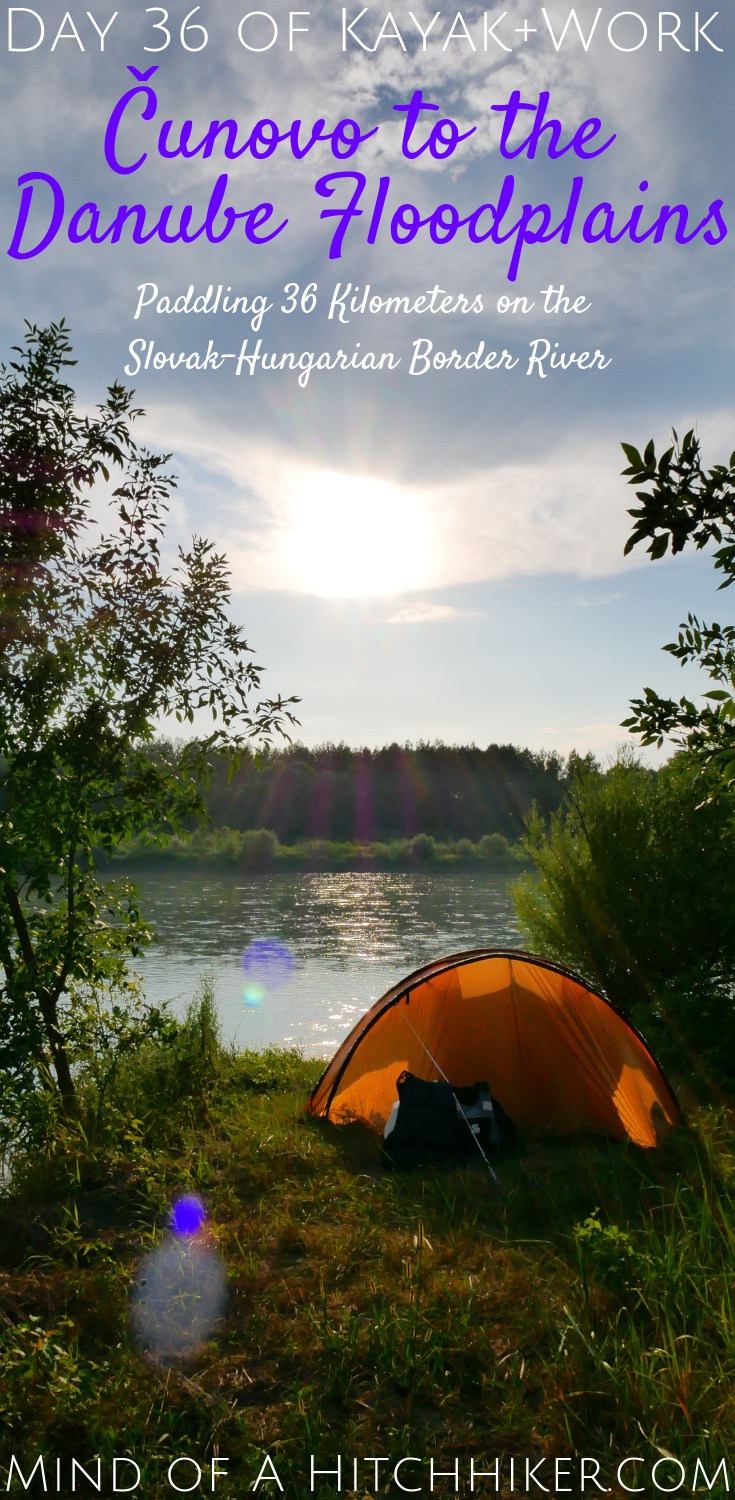

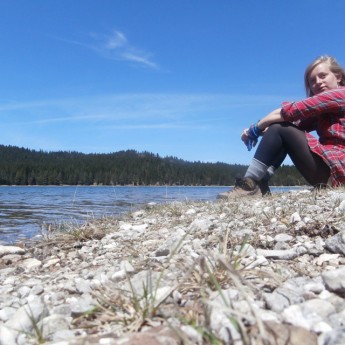
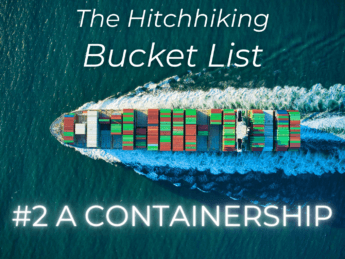
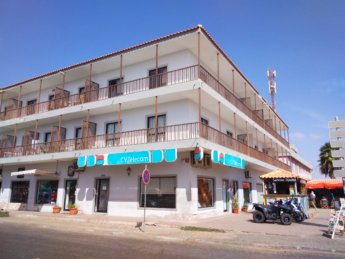
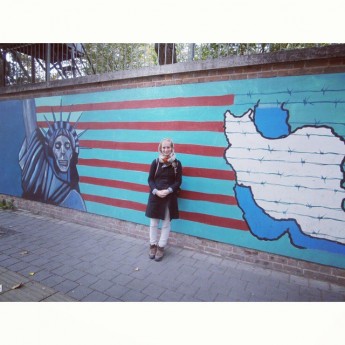
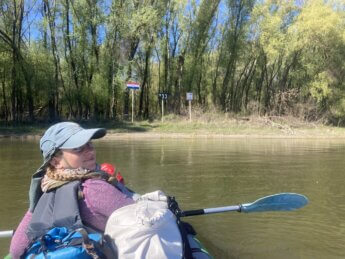
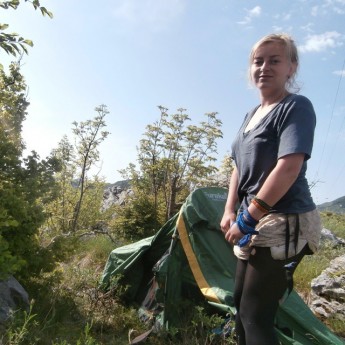
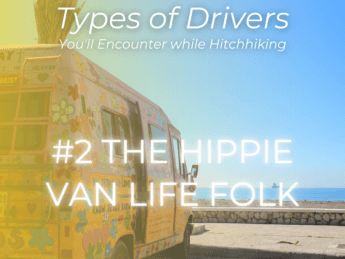
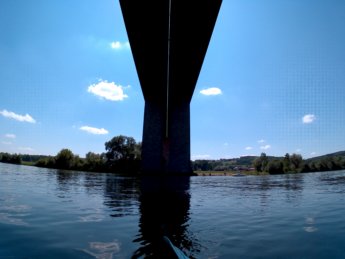
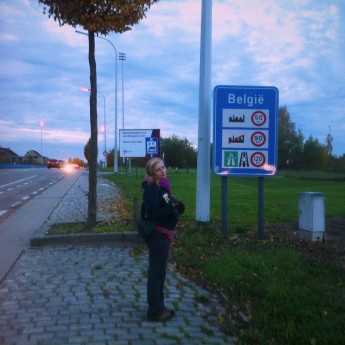
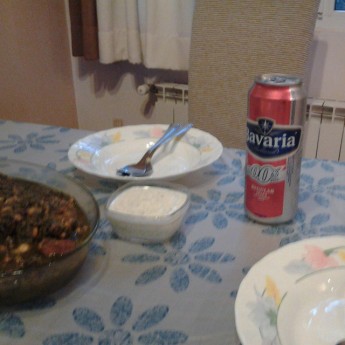
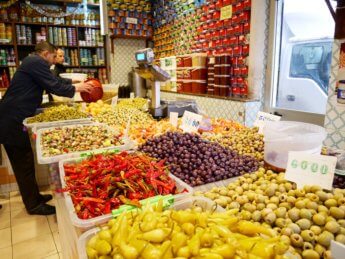
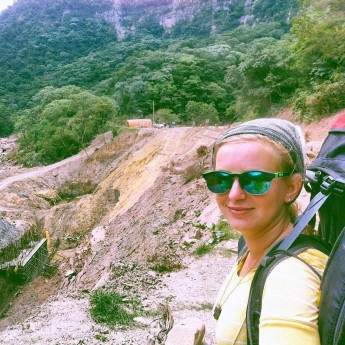
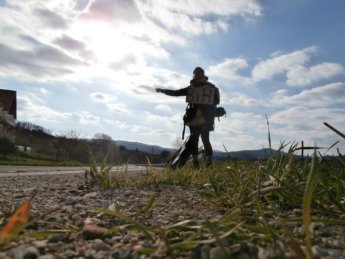
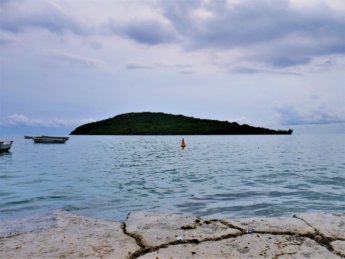

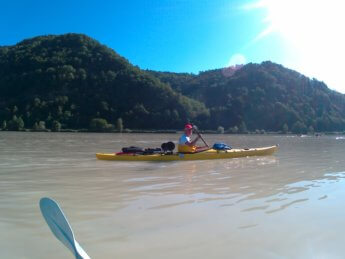
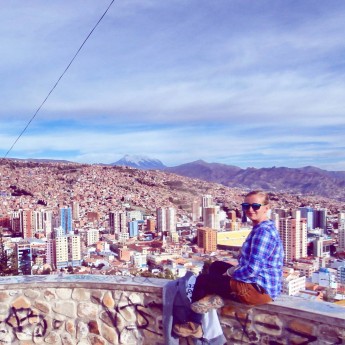
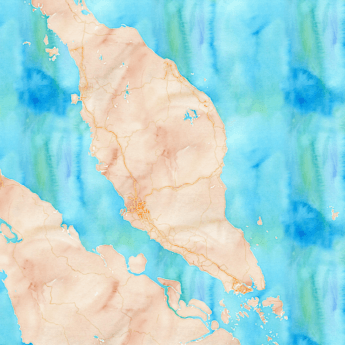
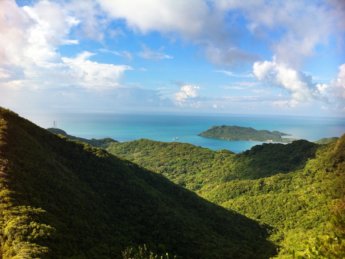

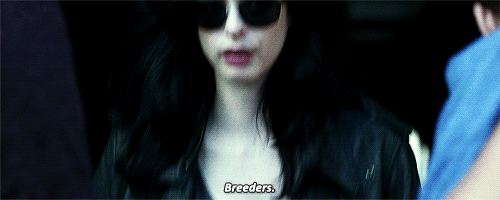
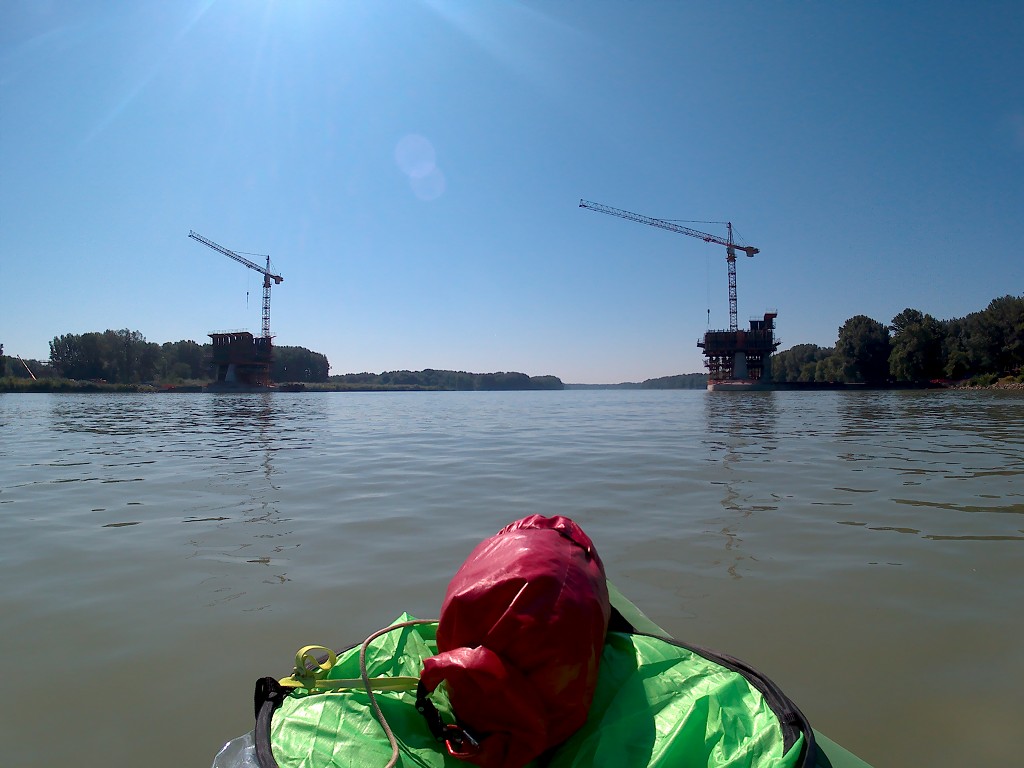
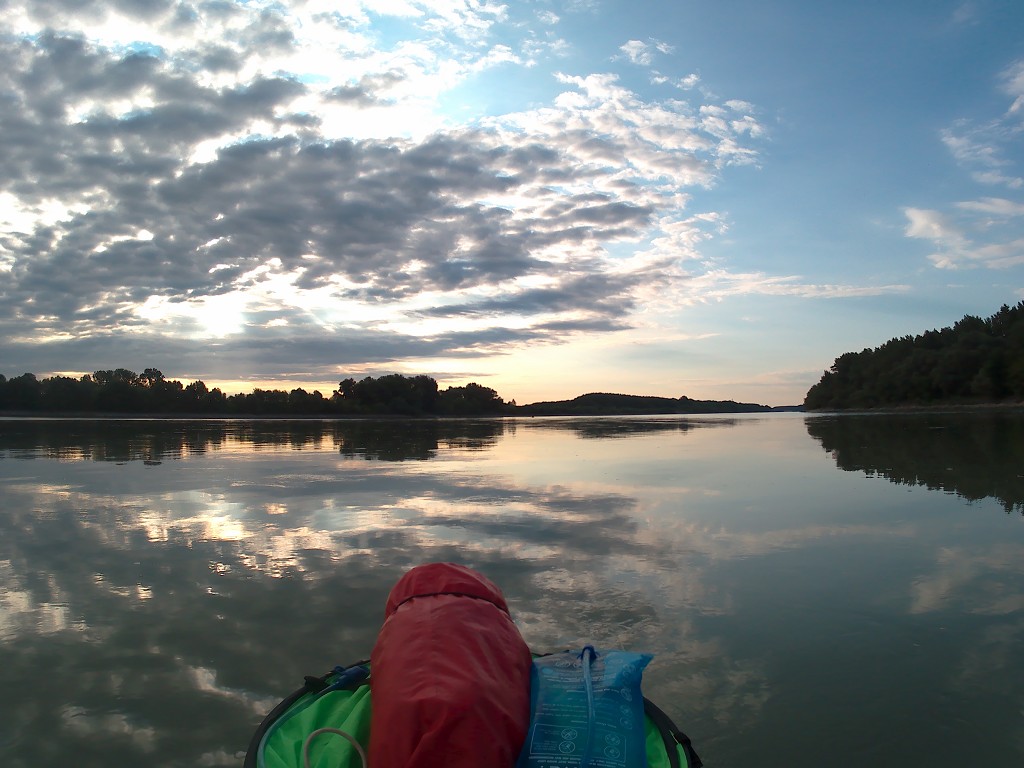


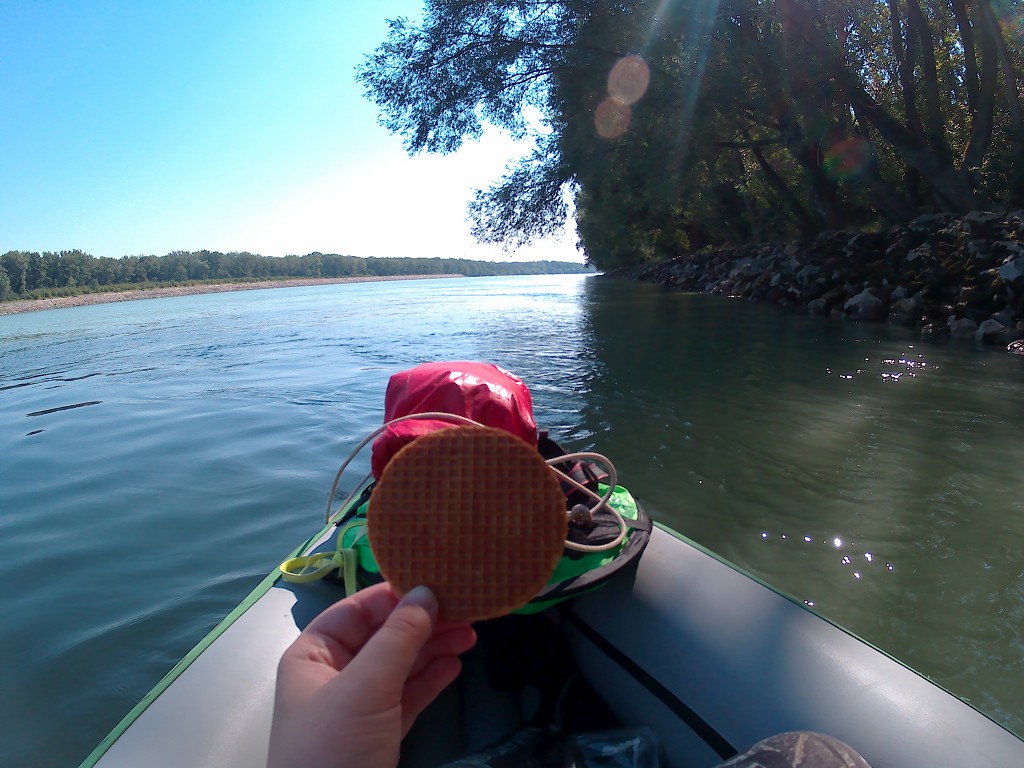
I am still enjoying your writing, and most of all the change in your style. Which matures, gets less judgemental and more informative as we go.
I’m in Cunovo right now, on a hot muggy day.
Let me tell you first that all the locks in the dams after Ulm worked for me, once I got them to send a technician and explain this Talfahrt/ bergfahrt business. Only one was on repair, so didnt work. The funny thing is that a couple coming behind me in an inflable kayak didn’t use them and Portaged every f**g one, like yourselves. And I dont know one word of German and am on my own with a heavy yak. I have been wild camping quite a bit, no problem. Interesting to note that many of these dams have good camping places as you portage. I am using the bike trail booklets that have good info on campings and maps. Plus Google maps/ Earth and Navionic maps that have the kilometers. I will paddlre till the first days of September wherever that catches me.
Uou have done a wonderful job with your dairy and it is sad you’re talking of not finishing. I have talked with people who have been in Bulgaria and Moldova a few weeks ago and said it was ok… not to say that sometimes its a bit scary.
I’ll be 72 on the 8th September and hope to celebrate kayaking. And do show people that there is life after 70!
People have been extremely kind and helpful all the way and it is very uplifting. Just and amazing experience.
I hope to read more things by you. Let us know.
Hi Teo, great to hear that the locks worked out for you. Nice to read that you find my articles useful. We might (might!) continue the trip next summer. I’m curious where you’ll be in September. Happy paddling!
P.S. Thank you for your donation!